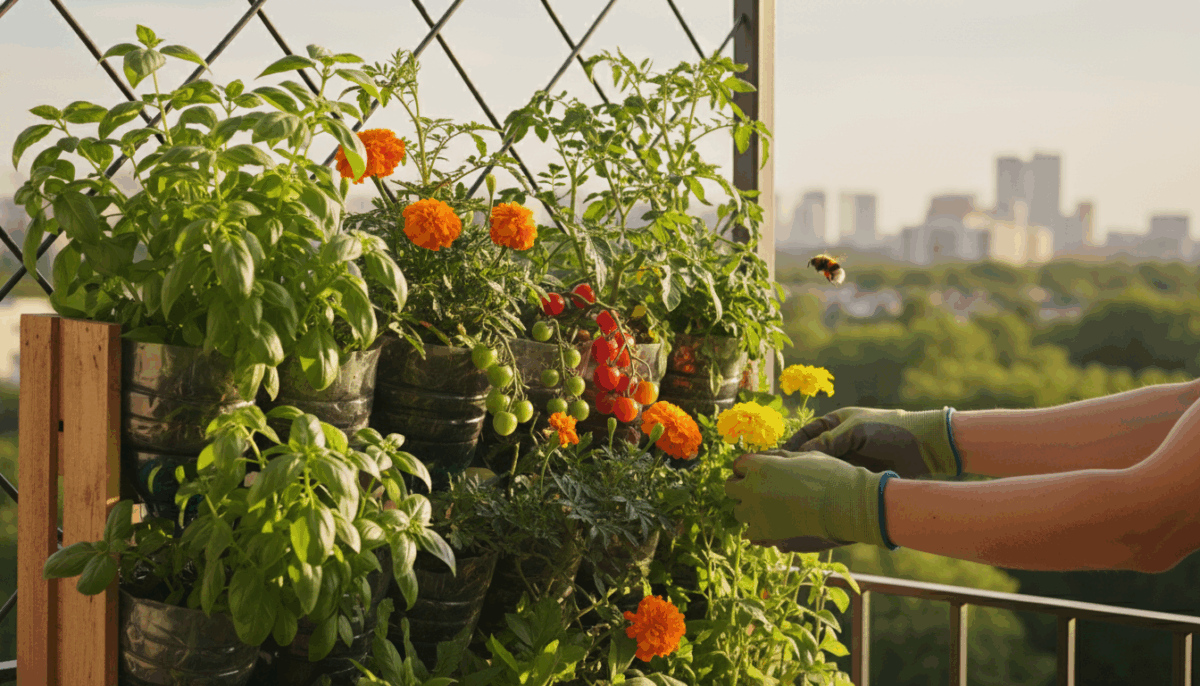For research-based guidance on edible gardening, visit
Kew Science — Plants of the World, University of California ANR — Home Gardening, Oregon State Extension — Gardening, Washington State University Hortsense and Texas A&M AgriLife Extension — Horticulture.
Disclaimer: This article is for informational purposes only and is not a substitute for professional advice. Consult local extension services for region-specific recommendations.
Your small garden, whether it is a balcony, a patio, or a compact backyard, offers immense potential for growing delicious, fresh produce. Maximizing every square inch is key when space is limited, and companion planting provides an elegant, effective solution. This age-old gardening technique involves strategically placing different plant species near each other to foster mutual benefits, enhance growth, deter pests, and even improve flavor. For your small garden, companion planting transforms individual containers and raised beds into thriving, synergistic ecosystems, ensuring you get the most out of every plant pair.
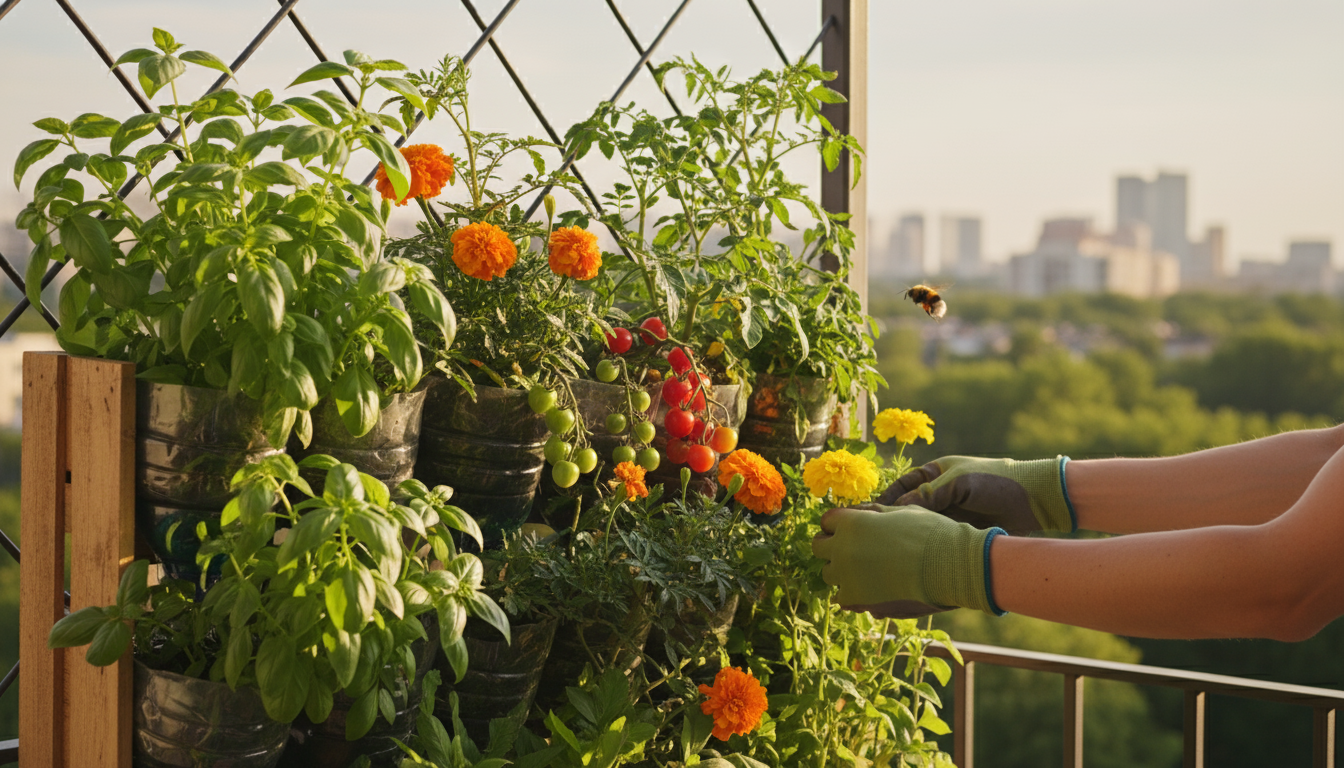
What Is Companion Planting and Why It Matters for Small Spaces
Companion planting is the practice of growing specific plants close to one another for their beneficial interactions. These interactions can include pest deterrence, attraction of beneficial insects, improved growth, enhanced flavor, and better soil health. Think of it as creating a community garden on a miniature scale, where each member contributes to the well-being of its neighbors. This traditional method relies on observation and understanding the natural world, allowing gardeners to leverage nature’s own strategies for healthier, more productive plants.
For your small garden, companion planting moves beyond a mere gardening curiosity; it becomes a fundamental strategy. With limited soil volume in containers and restricted root space in raised beds, every plant needs to pull its weight. Companion planting helps you achieve this by:
- Optimizing Space: You can interplant crops that have different growth habits, like a shallow-rooted lettuce underneath a taller tomato plant, making efficient use of vertical and horizontal space.
- Natural Pest Control: Many companion plants release compounds or scents that repel common pests, reducing your reliance on chemical treatments. This is especially valuable in a small garden where infestations can quickly spread.
- Attracting Beneficial Insects: Certain flowers and herbs act as magnets for pollinators and predatory insects that control destructive pests. Your small garden becomes a vibrant hub for helpful wildlife.
- Improving Soil and Nutrient Cycling: Some plants, like legumes, fix nitrogen in the soil, making it available to hungry neighbors. Others can break up compacted soil or act as living mulches, conserving moisture.
- Enhancing Plant Vigor and Flavor: Anecdotal evidence, supported by some scientific observations, suggests certain plant pairs grow stronger and even taste better when grown together. Imagine basil enhancing the flavor of your container tomatoes.
Embracing companion planting allows you to transform a few pots into a productive, resilient small garden ecosystem. You achieve better yields, healthier plants, and a more vibrant, pest-resistant growing environment without adding chemicals or significant effort.
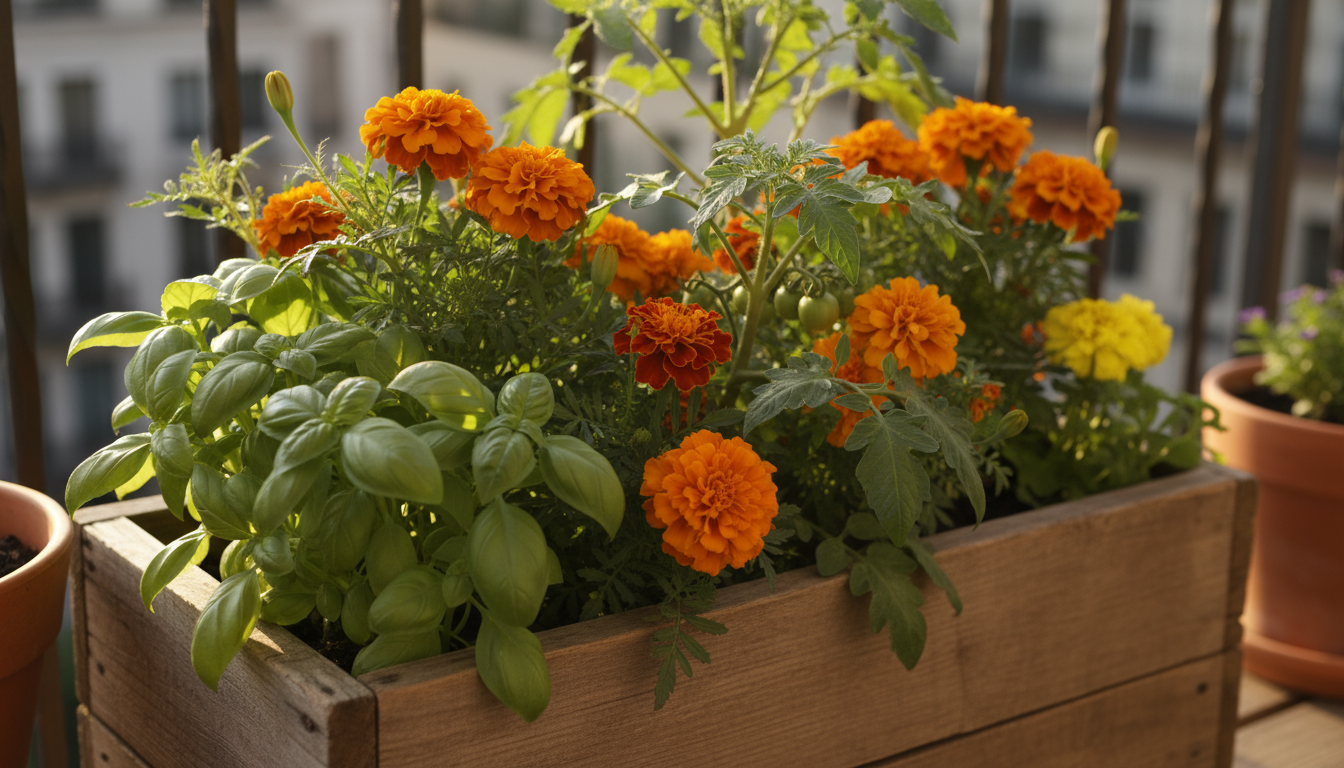
The Science of Plant Partnerships: How Your Garden Thrives Together
While some companion planting folklore dates back centuries, modern horticulture increasingly understands the scientific mechanisms behind these plant partnerships. You are not just planting randomly; you are orchestrating a complex biological interaction. Here are the primary ways plants benefit each other:
- Pest Deterrence and Repellence:
- Volatile Organic Compounds (VOCs): Many aromatic herbs, like mint, rosemary, and marigolds, release compounds that confuse or repel pests. For example, the strong scent of marigolds masks the smell of host plants, making it harder for pests like nematodes and root-knot nematodes to locate their targets. Research published in journals like the Journal of Chemical Ecology has documented the pest-deterring effects of specific plant extracts.
- Trap Cropping: Some plants, known as trap crops, attract pests away from your main crops. Nasturtiums, for instance, are highly attractive to aphids, luring them away from your prized vegetables.
- Beneficial Insect Attraction:
- Nectar and Pollen Sources: Flowering plants, especially those with small, open flowers like dill, cilantro (when allowed to bolt), and marigolds, provide nectar and pollen for pollinators such as bees and butterflies. They also attract beneficial predators like ladybugs, lacewings, and parasitic wasps, which feed on common garden pests like aphids and cabbage worms.
- Shelter: Denser, multi-layered plantings can create microclimates and shelter for these helpful insects, encouraging them to stay in your garden.
- Nutrient Cycling and Soil Health:
- Nitrogen Fixation: Legumes, including beans and peas, have symbiotic relationships with bacteria in their root nodules. These bacteria convert atmospheric nitrogen into a form usable by plants, enriching the soil for nearby companions.
- Dynamic Accumulators: Some deep-rooted plants, often referred to as dynamic accumulators, draw minerals from deeper soil layers, making them available to shallower-rooted plants when their leaves decompose or are chopped and dropped as mulch. Comfrey is a classic example, though its size makes it less practical for very small spaces.
- Physical Soil Improvement: Root systems of various plants can improve soil structure, aeration, and water penetration.
- Physical Support and Microclimate Modification:
- The “Three Sisters” Guild: The classic Native American planting of corn, beans, and squash exemplifies physical support. Corn provides a stalk for beans to climb, beans fix nitrogen for the heavy-feeding corn and squash, and squash leaves provide ground cover, suppressing weeds and conserving moisture. While full-size corn may be too large for tiny spaces, dwarf varieties or other tall plants can serve similar roles.
- Shade and Shelter: Taller plants can provide beneficial shade to sun-sensitive companions during hot periods, preventing bolting in greens or sunscald on fruits.
- Allelopathy:
- This is where plants release biochemicals that affect the growth of other plants. While often discussed in the context of negative interactions (e.g., black walnut inhibiting growth), some allelopathic interactions are beneficial. For example, marigolds release compounds that suppress nematodes. Understanding these chemical communications helps you choose optimal plant pairs. For further reading on plant interactions, consider resources from universities like Texas A&M AgriLife Extension – Horticulture.
By understanding these scientific principles, you gain confidence in selecting the right companions, transforming your small garden into a resilient and productive growing space.
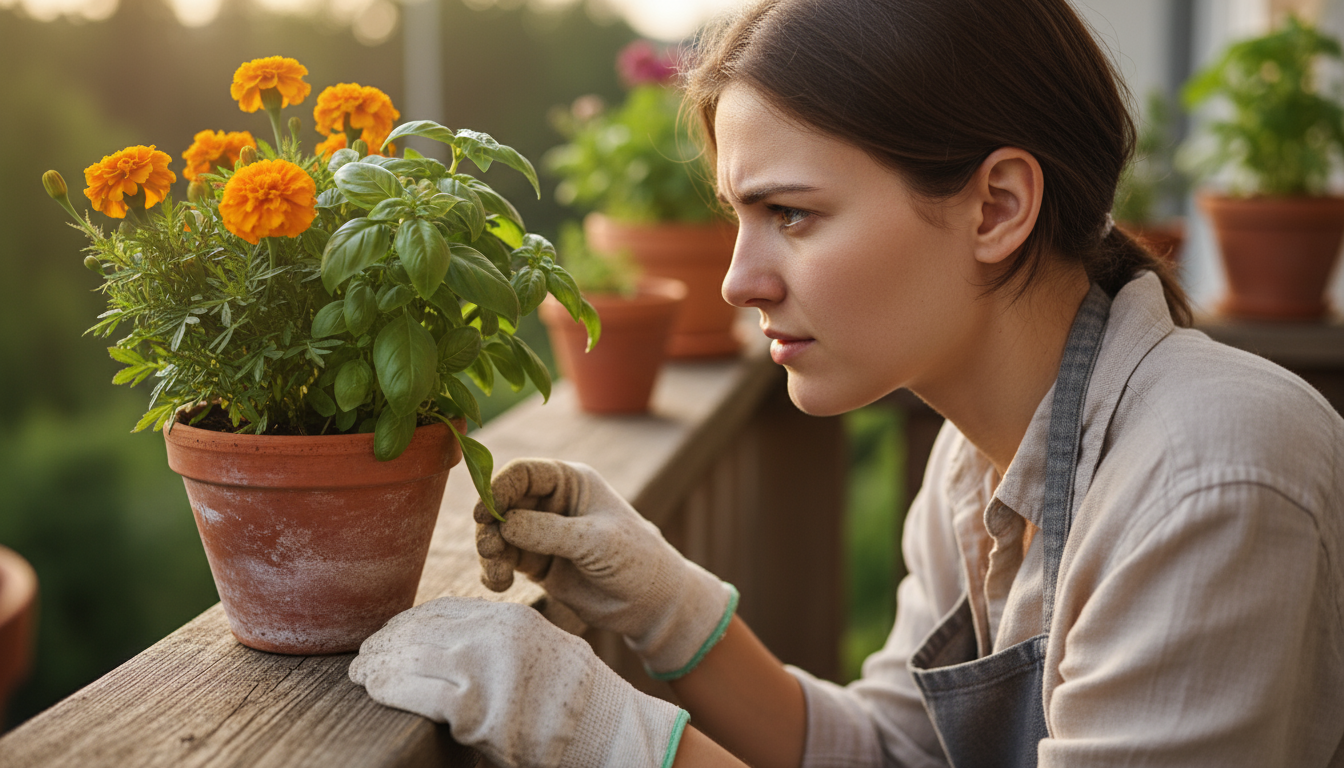
Designing Your Tiny Ecosystem: Planning for Success
Successful companion planting in small spaces begins with thoughtful planning. Your compact growing area, whether a container, a raised bed, or a small patch of ground, demands efficient design. You want to create a miniature ecosystem where plants thrive together. Here’s how you can approach your design:
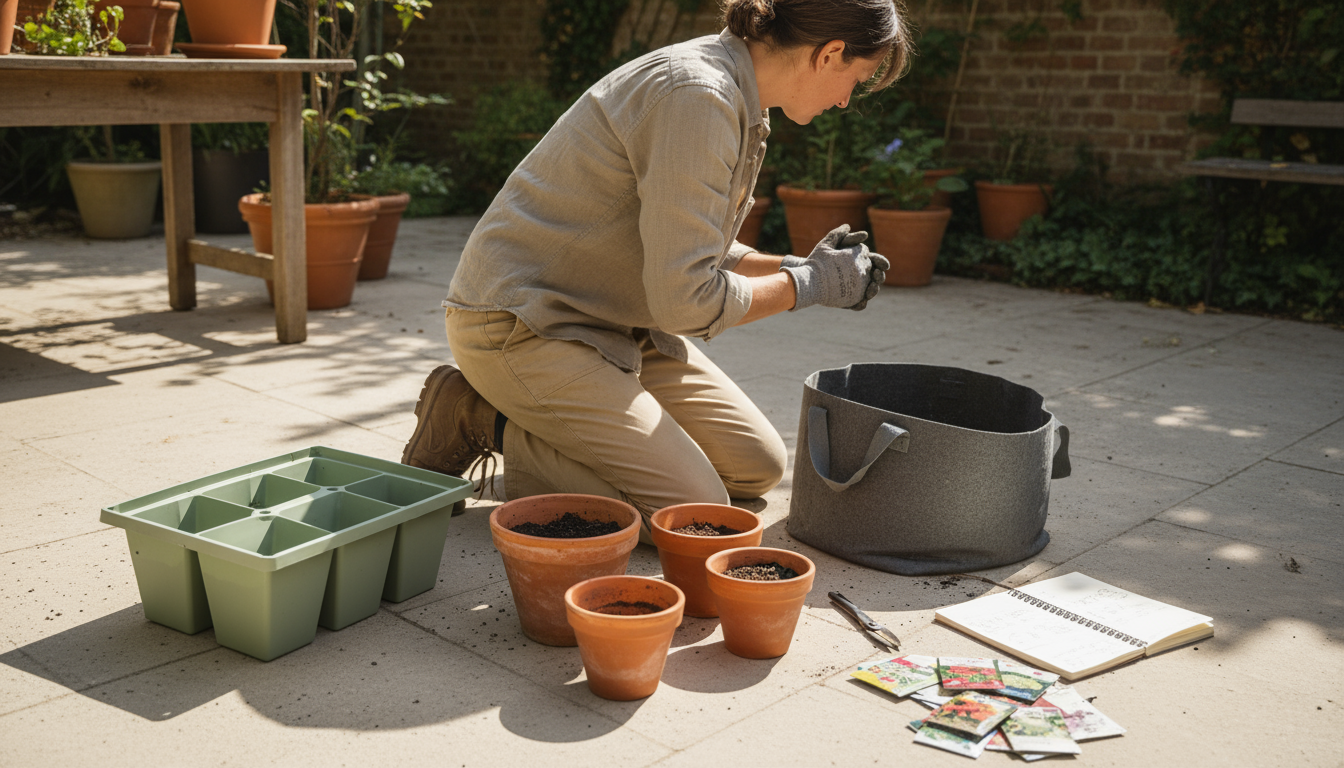
Assess Your Space: Light, Wind, and Water
- Sunlight: Track your sunlight patterns. Most edible plants, especially fruits like tomatoes and peppers, need 6-8 hours of direct sun daily. Leafy greens tolerate less, often 4-6 hours. Position sun-lovers where they get maximum exposure, and tuck sun-sensitive companions into their shade.
- Wind Exposure: Balconies and open patios can experience strong winds. Taller companion plants can offer some windbreak for more delicate neighbors. Consider sturdy containers and trellis systems for support.
- Water Access: Plan your layout so plants with similar watering needs are grouped together. This prevents overwatering drought-tolerant plants or underwatering moisture-loving ones.
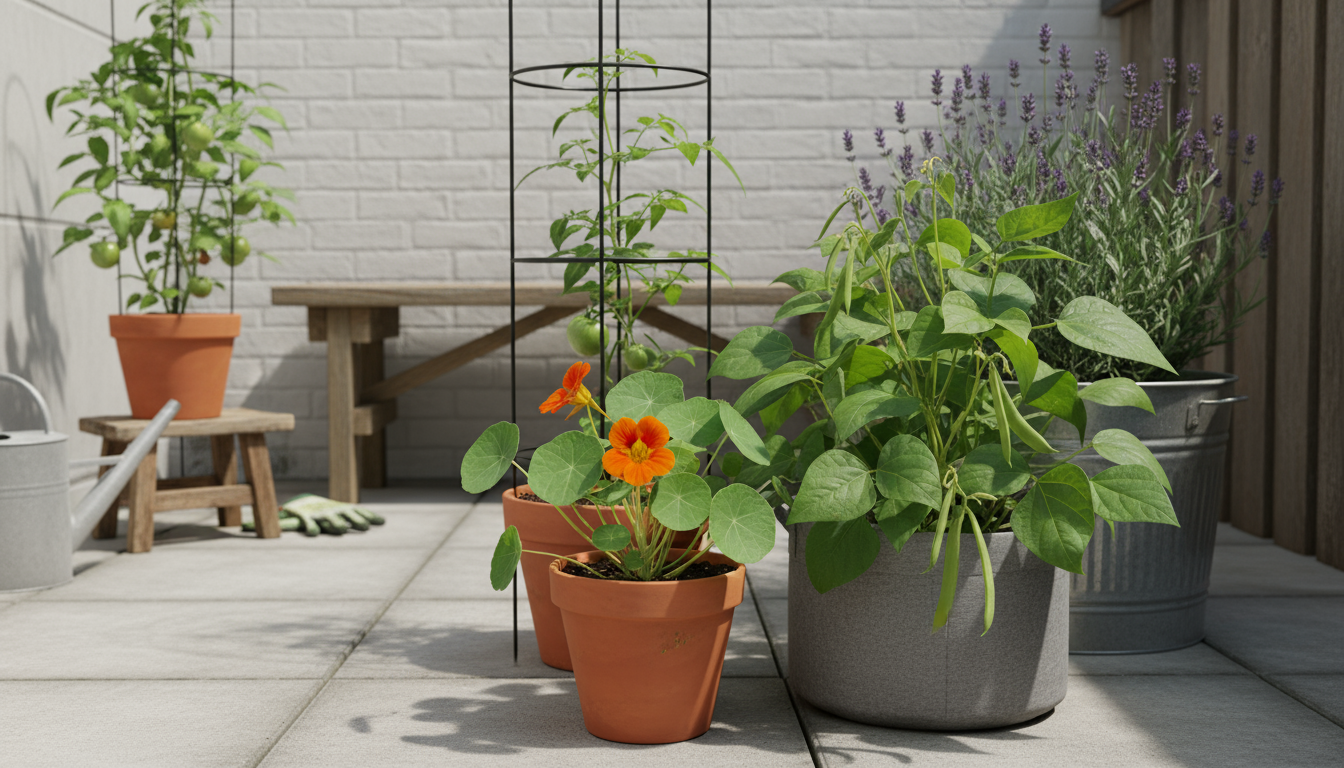
Container Considerations for Companion Planting
Containers are the backbone of many small gardens. Choosing the right ones and arranging them strategically makes a significant difference:
- Size Matters: Opt for the largest containers your space and budget allow. Larger pots hold more soil, offer more root room for multiple companions, and retain moisture longer. A single deep container can host a “guild” of plants, like a tomato, basil, and marigold.
- Drainage: Ensure all containers have adequate drainage holes. Companion plants need good drainage to prevent root rot.
- Materials: Terra cotta pots dry out faster than plastic or glazed ceramic. Grouping similar moisture-preference companions in appropriate pots simplifies watering. Fabric grow bags are excellent for air pruning roots and promoting healthy growth for root vegetables and larger plants.
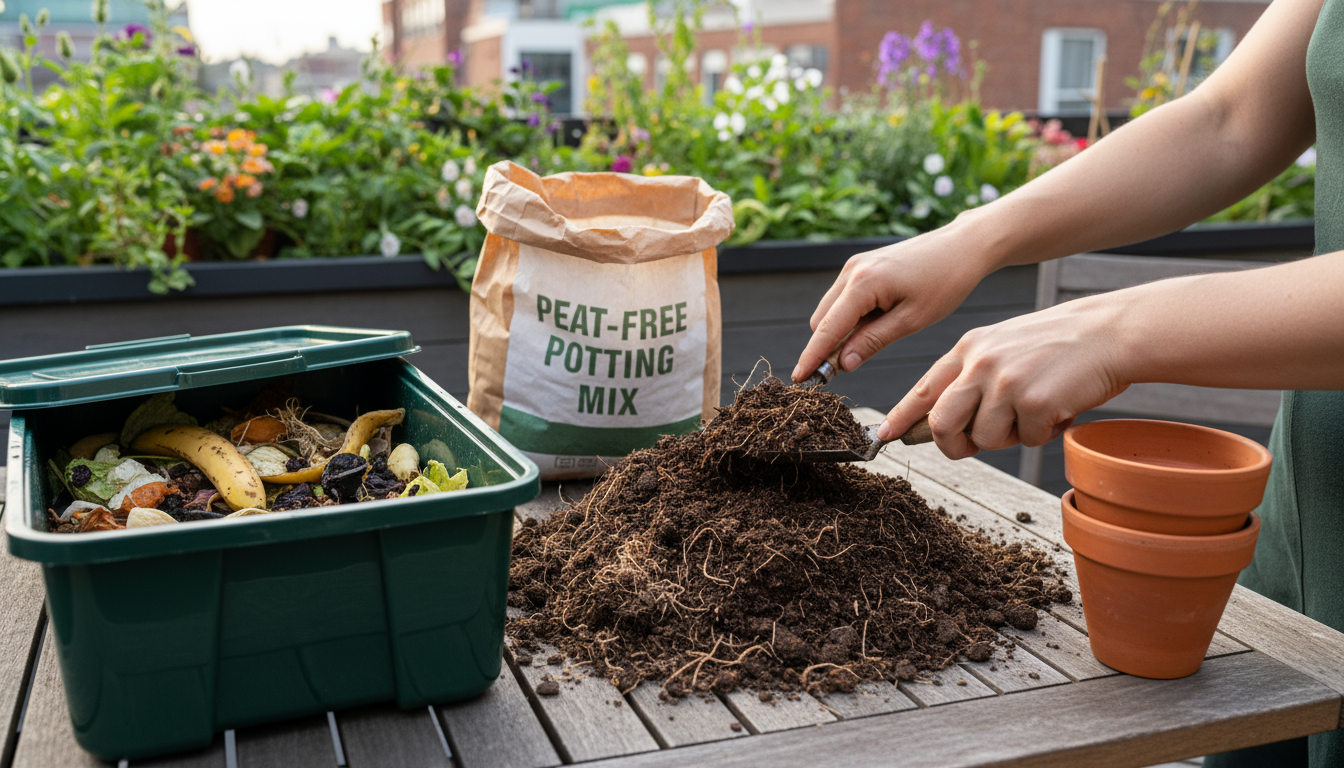
Maximize Vertical Space
Companion planting shines when you integrate vertical elements. This strategy significantly increases your growing area:
- Trellises and Stakes: Use trellises, stakes, or obelisks for climbing plants like pole beans, cucumbers, and small squash varieties. Plant shallow-rooted companions at their base, benefiting from the shade and improving soil health.
- Tiered Planters: Tiered planters allow you to grow different companions at various levels, optimizing light exposure and creating a diverse environment. Place sun-loving, taller plants at the top and shade-tolerant greens below.
- Hanging Baskets: Use hanging baskets for herbs or trailing flowers (like nasturtiums) that can repel pests or attract beneficials to plants below.
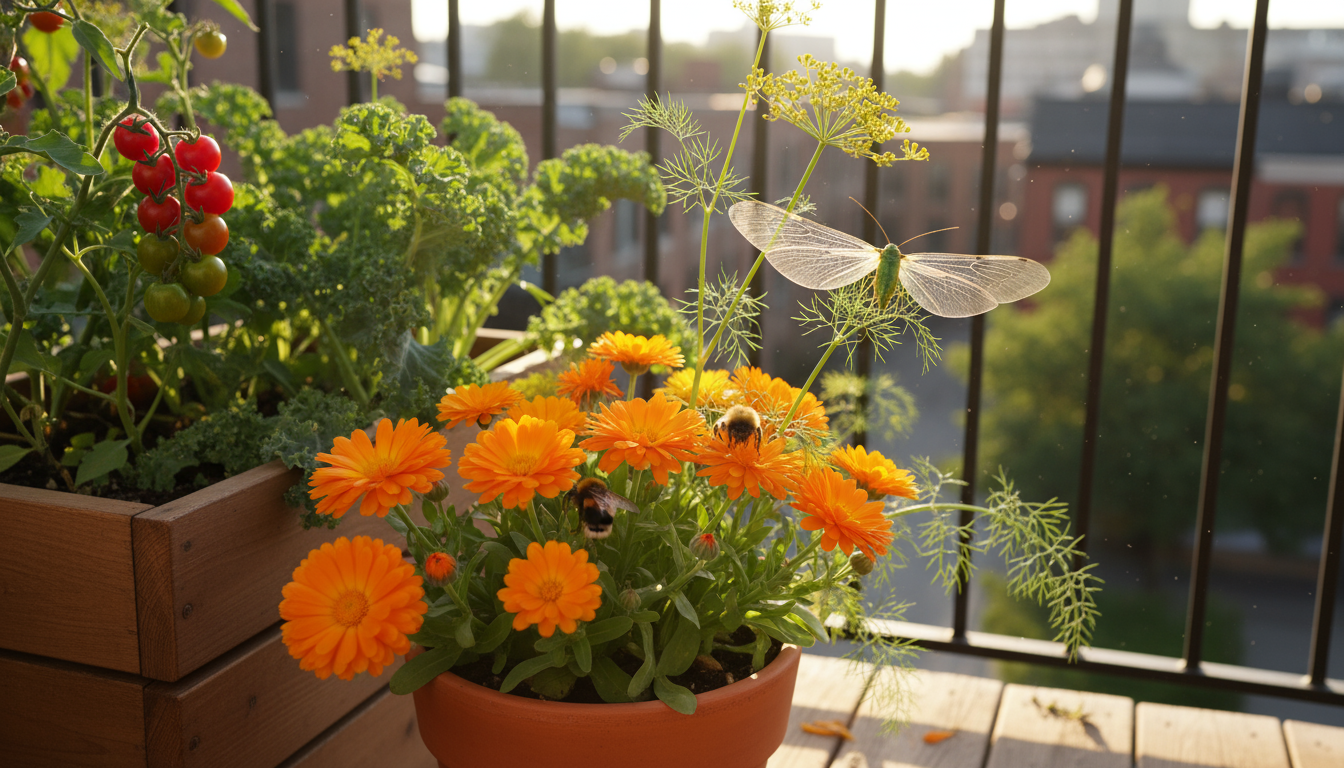
Interplanting for Efficiency
Interplanting involves growing multiple crops in the same space at the same time. This is a core concept in companion planting for small garden setups:
- Staggered Planting: Plant fast-growing, short-season crops (like radishes or lettuce) between slower-growing, long-season plants (like broccoli or peppers). You harvest the fast crop before the slower one needs the space.
- Growth Habit Diversity: Combine plants with different root depths and canopy sizes. For example, a deep-rooted tomato plant can share a container with shallow-rooted basil and a trailing nasturtium, each occupying a different niche.
By thoughtfully designing your small garden space with these principles, you create a robust and productive environment where companion plants support each other, making the most of every precious inch.
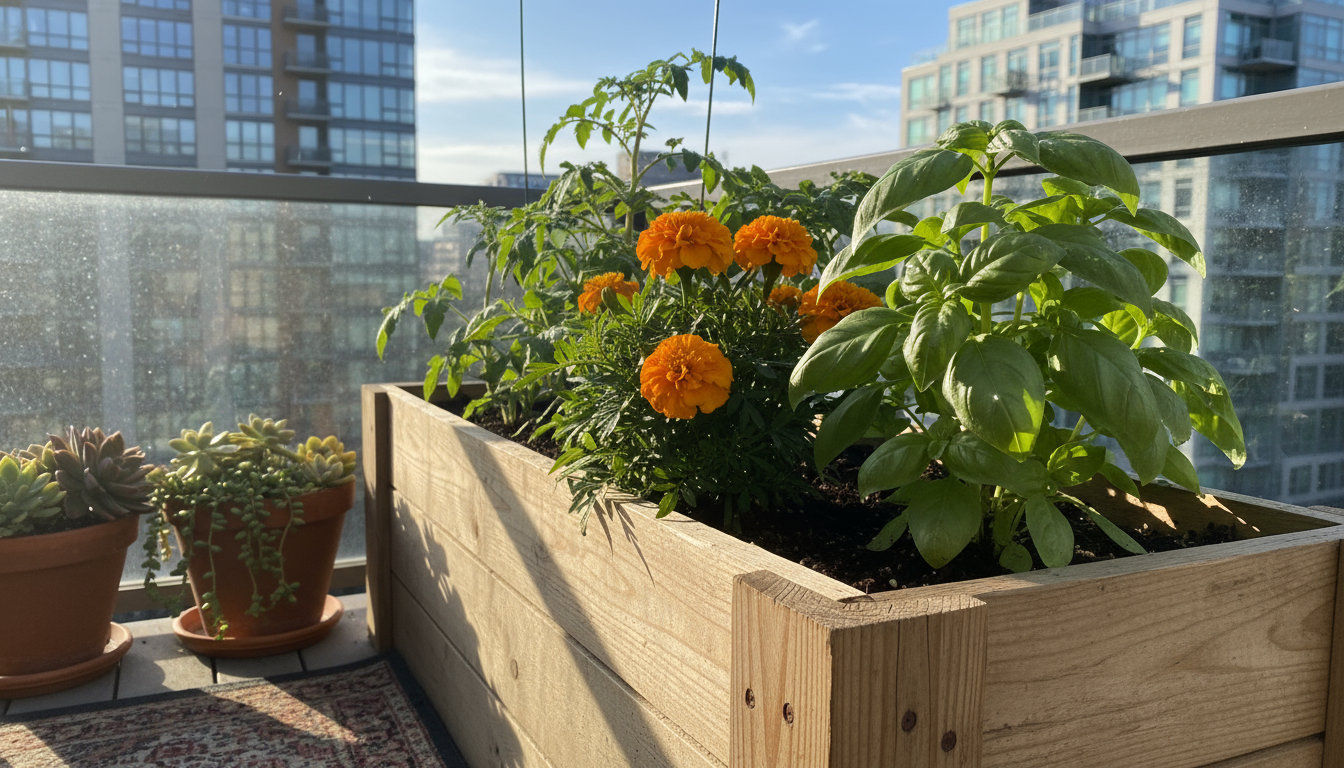
Top Plant Pairs for Your Small Edible Garden
Now that you understand the “why” and “how” of companion planting, let’s explore specific plant pairs that deliver excellent results for your small garden. These combinations are chosen for their proven benefits and their suitability for container or raised bed environments. You’ll find these pairings help deter pests, attract beneficial insects, and enhance growth and flavor.
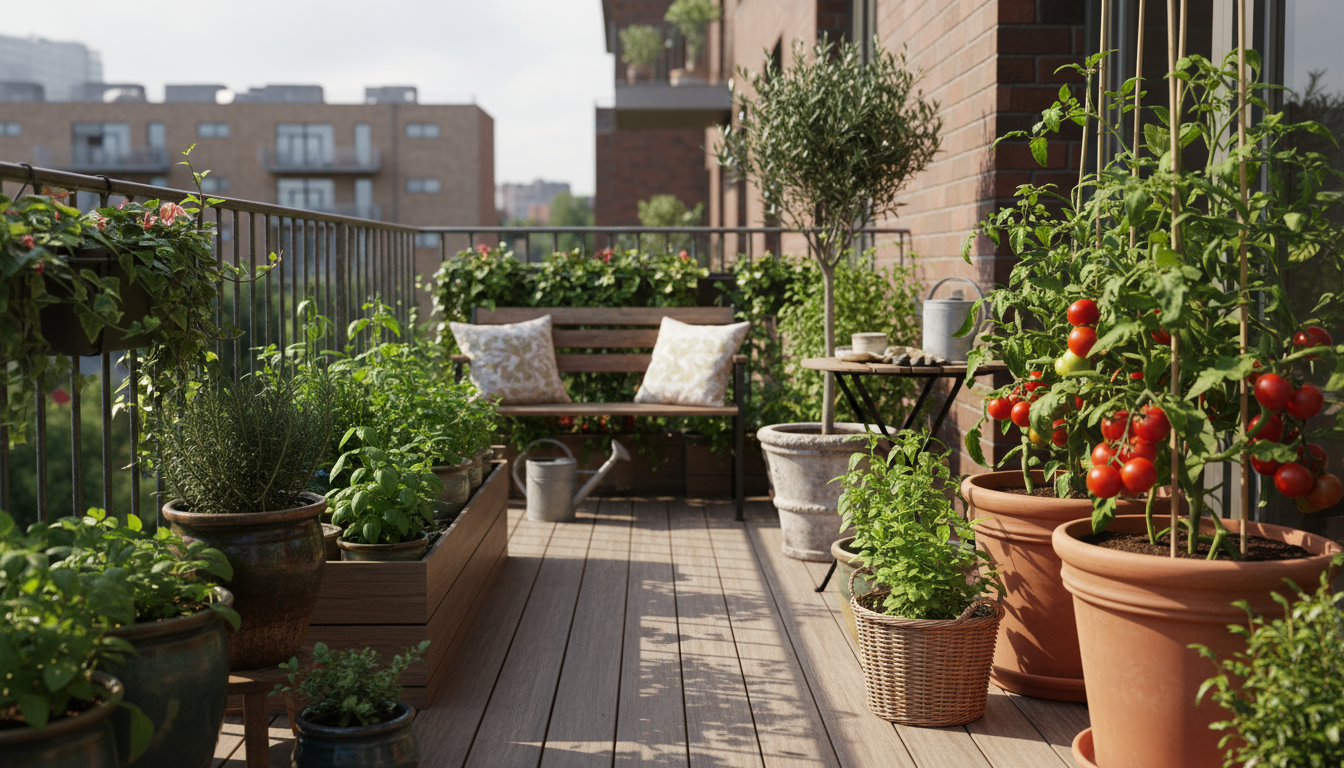
Herbs as Hardworking Allies in Small Spaces
Aromatic herbs are among the best companions you can choose for your small edible garden. Their strong scents and essential oils often deter pests, while their flowers attract beneficial insects. They also fit well into containers.
- Basil and Tomatoes: This is a classic pairing. Basil reputedly improves the flavor of tomatoes and helps deter tomato hornworms and flies. Plant a basil plant at the base of each tomato plant in a large container or raised bed.
- Mint and Cabbage/Brassicas: Mint’s strong scent can confuse cabbage moths and other brassica pests. Be cautious, though; mint is incredibly vigorous and can quickly take over. Grow it in its own pot next to your cabbage or broccoli containers to prevent it from overwhelming its neighbors.
- Rosemary and Beans/Carrots: Rosemary’s woody scent deters bean beetles and carrot rust flies. Place a rosemary plant in a pot near your bean or carrot containers.
- Thyme and Cabbage/Cauliflower: Thyme acts as a repellent for cabbage worms. Its low-growing habit also acts as a living mulch, suppressing weeds and conserving moisture.
- Chives and Carrots/Apples (if you have dwarf trees): Chives deter carrot rust flies and aphids. They also help improve the growth and flavor of carrots. For dwarf fruit trees, chives can help deter apple scab.
- Cilantro (Coriander) and Potatoes/Anise: When allowed to flower, cilantro attracts beneficial insects like lacewings and parasitic wasps, which prey on potato beetles and aphids.
- Dill and Cabbage/Lettuce/Corn: Dill attracts parasitic wasps, lacewings, and ladybugs, all of which feast on aphids and cabbage worms. It can also improve the flavor of cabbage and repel spider mites.
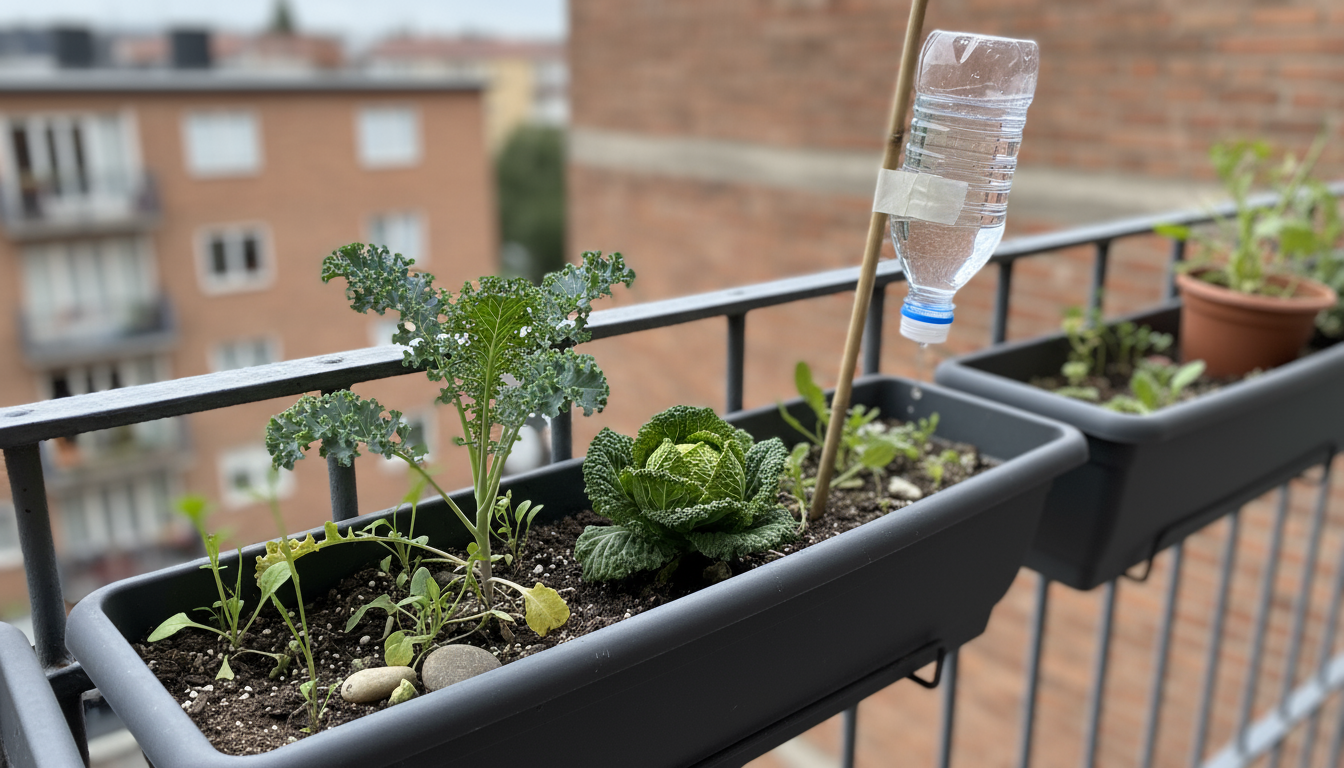
Flowers for Function and Beauty: More Than Just Pretty Faces
Don’t underestimate the power of flowers in your edible garden. They offer beauty, but more importantly, they perform crucial tasks like pest deterrence and beneficial insect attraction, especially in a compact setting where every plant needs a purpose.
- Marigolds (Tagetes spp.) and almost everything: French marigolds (Tagetes patula) are famous for deterring nematodes in the soil, particularly effective if you are reusing container soil. They also repel whiteflies and other pests. Plant them generously among your tomatoes, peppers, beans, and greens.
- Nasturtiums and Squash/Cucumbers/Radishes: Nasturtiums are excellent trap crops for aphids, luring them away from your main vegetables. They also repel squash bugs and cucumber beetles. Their leaves and flowers are edible, adding a peppery kick to salads.
- Calendula (Pot Marigold) and Tomatoes/Asparagus: Calendula attracts beneficial insects like hoverflies (whose larvae eat aphids) and parasitic wasps. It also helps deter asparagus beetles and tomato hornworms. Its petals are edible, adding color to dishes.
- Borage and Tomatoes/Squash/Strawberries: Borage attracts bees, improving pollination for fruits and vegetables. It also deters tomato hornworms and cabbage worms. Some gardeners believe it improves the flavor of tomatoes and strawberries.
- Cosmos and a variety of vegetables: Cosmos, particularly varieties with single flowers, are excellent for attracting pollinators and beneficial insects like lacewings and hoverflies to your garden, helping with pest control.
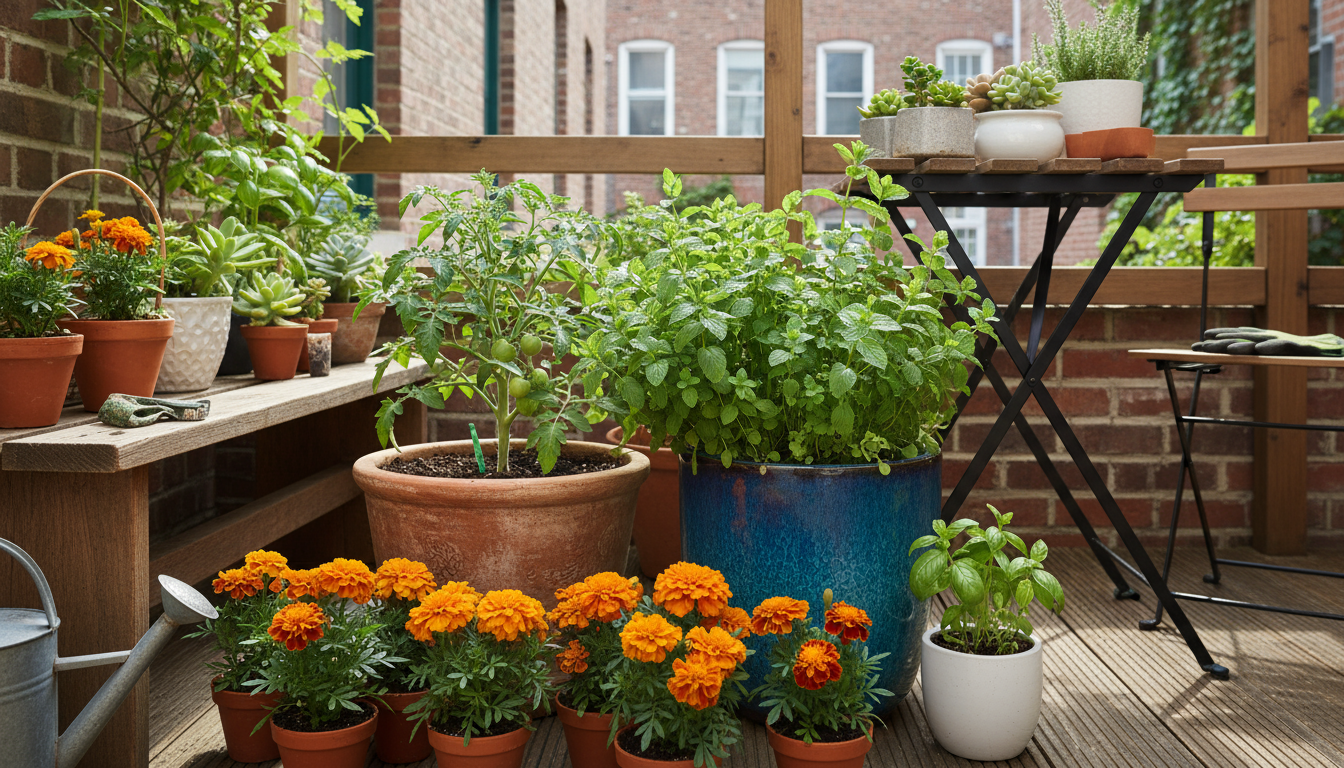
Vegetable Virtuosos: Smart Pairings for Maximizing Yield
Certain vegetable combinations work wonders together, whether it is for pest control, growth enhancement, or efficient use of space. These plant pairs become highly effective partners in a small garden.
Here is a table summarizing some highly effective vegetable companion pairings for your small-space garden:
| Primary Crop | Companion Plants | Benefits |
|---|---|---|
| Tomatoes | Basil, Marigolds, Carrots, Chives, Parsley, Nasturtiums | Basil improves flavor, deters hornworms. Marigolds deter nematodes, whiteflies. Carrots benefit from tomato shade. Chives deter aphids. Nasturtiums are a trap crop for aphids. |
| Beans (Bush & Pole) | Corn (dwarf), Marigolds, Rosemary, Savory, Carrots, Cucumbers | Beans fix nitrogen for heavy feeders. Marigolds deter nematodes. Rosemary deters bean beetles. Savory deters bean beetles. Carrots, cucumbers enjoy the nitrogen. |
| Cabbage & Brassicas (Broccoli, Kale, Kohlrabi) | Dill, Thyme, Mint (in separate pot), Rosemary, Nasturtiums, Marigolds, Chamomile | Dill attracts beneficials, deters cabbage worms. Thyme deters cabbage worms. Mint repels cabbage moths. Nasturtiums are a trap crop for aphids. Marigolds deter various pests. Chamomile can improve growth. |
| Carrots | Rosemary, Chives, Lettuce, Radishes, Marigolds, Tomatoes | Rosemary and Chives deter carrot rust fly. Lettuce and radishes are fast-growing interplants. Marigolds help with soil nematodes. Tomatoes offer light shade. |
| Cucumbers | Radishes, Corn (dwarf), Marigolds, Nasturtiums, Beans | Radishes can be interplanted. Dwarf corn provides climbing structure. Marigolds repel cucumber beetles. Nasturtiums are a trap crop. Beans fix nitrogen. |
| Lettuce & Greens | Chives, Mint (in separate pot), Marigolds, Radishes, Carrots, Taller crops (for shade) | Chives deter aphids. Mint deters slugs. Marigolds deter nematodes. Radishes can be interplanted for quick harvest. Taller crops provide beneficial shade in heat. |
| Peppers (Bell & Hot) | Basil, Marigolds, Onions, Carrots, Spinach | Basil improves flavor, deters some pests. Marigolds deter nematodes, whiteflies. Onions deter aphids. Carrots and spinach can be underplanted for efficient space use. |
| Radishes | Lettuce, Spinach, Carrots, Nasturtiums, Chives | Fast-growing, they loosen soil for companions. Lettuce and spinach benefit from quicker harvest. Nasturtiums can trap aphids. Chives deter some root maggots. |
| Potatoes | Beans, Marigolds, Coriander, Horseradish (large, use caution) | Beans fix nitrogen. Marigolds deter nematodes. Coriander attracts beneficial insects that prey on potato beetles. Horseradish can deter potato beetles (use in large pots only due to vigorous spread). |
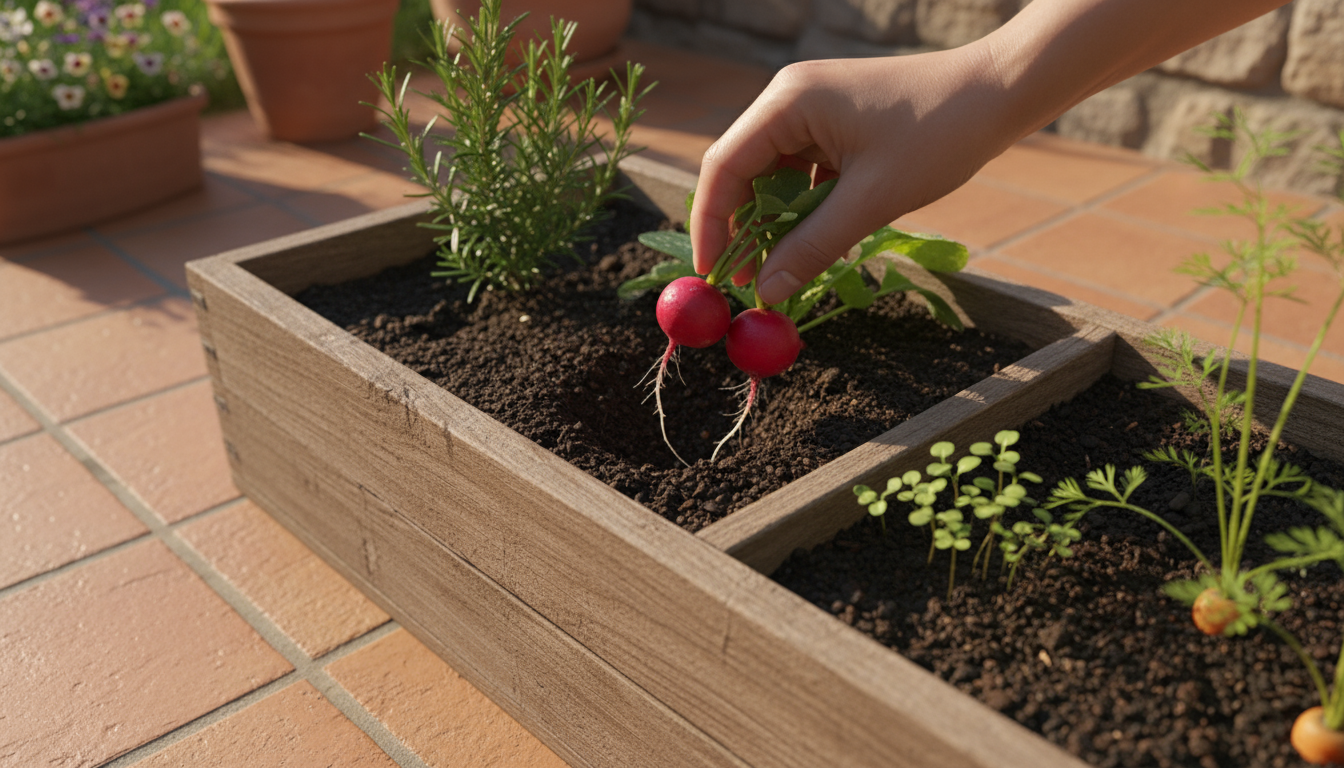
Maximizing Harvests in Limited Space with Companion Planting
In your small garden, maximizing every harvest is a priority. Companion planting contributes significantly to increased yields by creating a healthier, more productive environment. You can take several steps to ensure your companion planting strategies translate into abundant baskets of fresh produce.
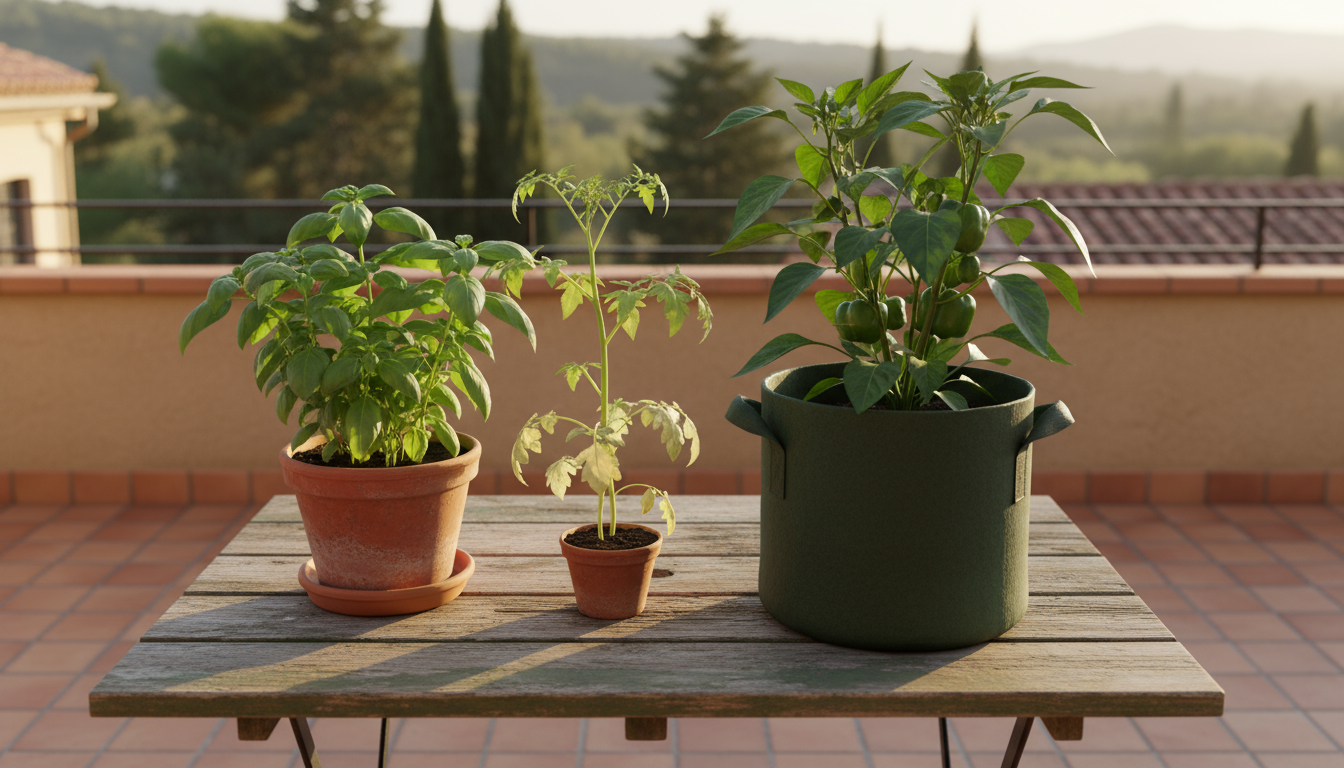
Strategic Interplanting for Continuous Harvests
Interplanting involves growing multiple crops in the same space, often with different growth rates or requirements. This method helps you get more from your small garden beds and containers throughout the season.
- Succession Sowing: This means planting small batches of a crop every couple of weeks, ensuring harvests keep coming rather than all at once. For example, plant a short row of lettuce every two weeks alongside your main companions. As one batch finishes, the next is ready.
- Fast-Growing Companions: Utilize fast-growing companions like radishes or leafy greens. Plant them alongside slower-growing main crops. You will harvest the radishes within a month, creating space and enriching the soil before the main crop fully matures. For instance, sow radishes around the base of developing pepper plants.
- Utilizing Vertical and Horizontal Space: Combine plants with different growth habits. Plant shallow-rooted herbs like basil or thyme around the base of a trellised cucumber or pole bean. The vine uses vertical space, while the herb uses horizontal ground space and offers pest protection.
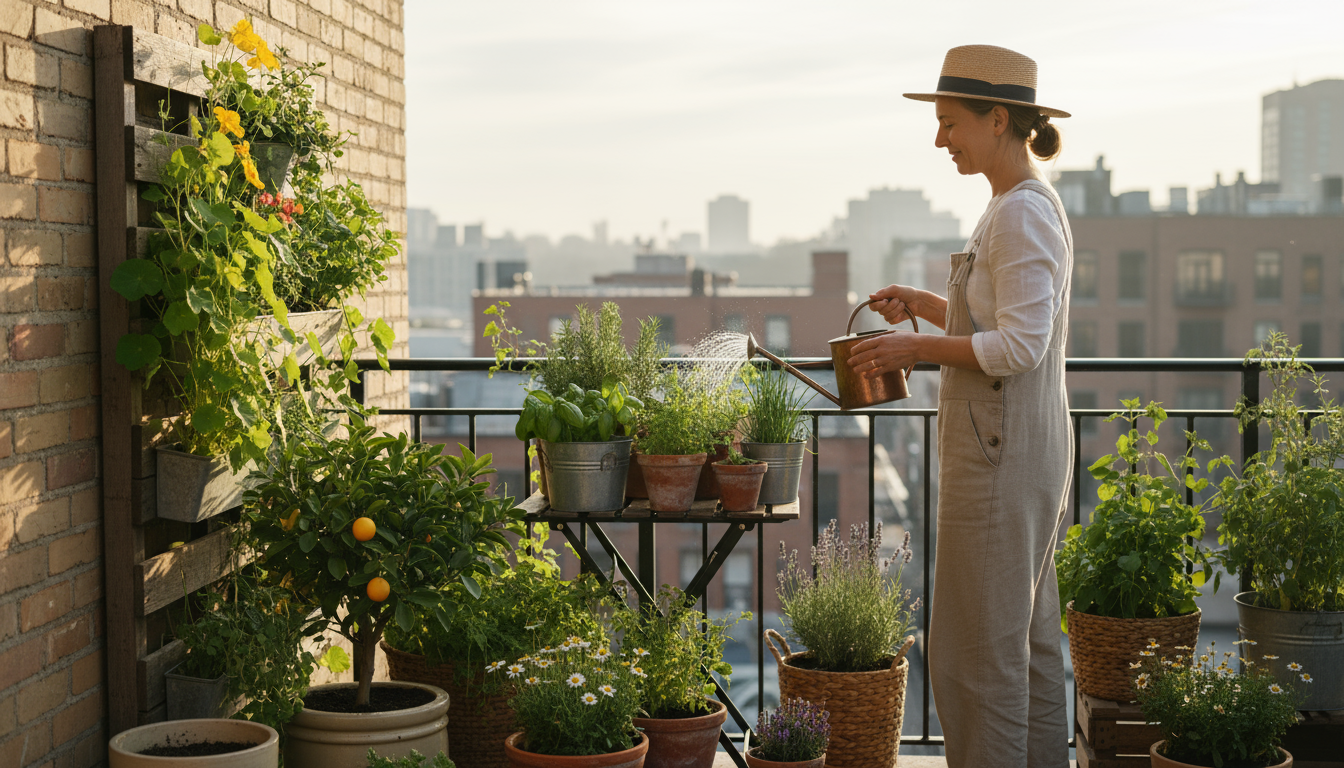
Enhancing Pollination and Fruit Set
Many edible plants, especially those that produce fruits like tomatoes, peppers, squash, and beans, rely on pollinators. Attracting these beneficial insects directly impacts your yield.
- Flowering Companions: Incorporate flowering herbs and annuals. Plants like borage, calendula, dill (when allowed to flower), and cosmos are excellent magnets for bees, butterflies, and other essential pollinators. Place these flowers strategically near your fruiting vegetables.
- Continuous Blooms: Choose companion flowers that bloom throughout the growing season to provide a consistent food source for pollinators. This encourages them to take up residence in your garden, improving fruit set for all your edibles.
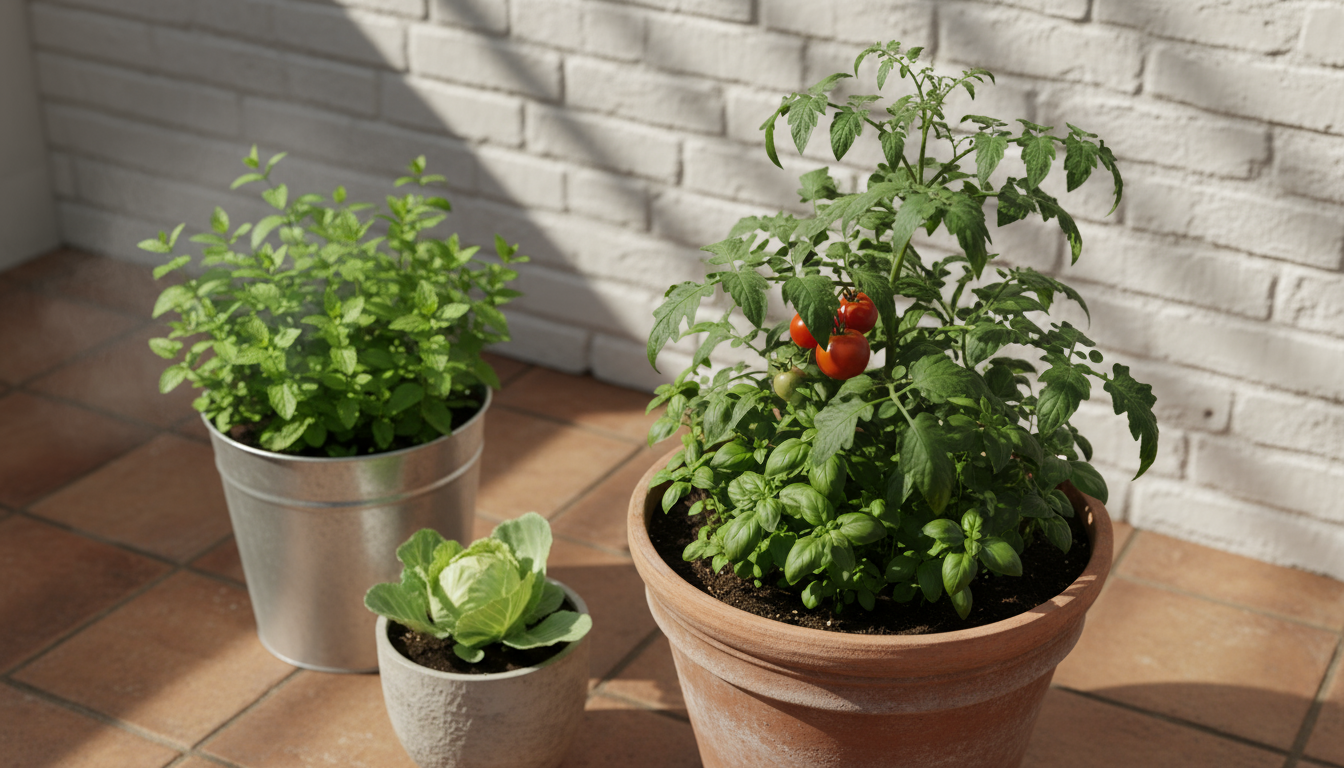
Healthy Soil, Healthy Yields
Companion planting often leads to improved soil health, which directly translates to stronger plants and bigger harvests, even in the confines of a container.
- Nitrogen Fixers: Plant legumes like bush beans or peas as companions. They replenish nitrogen in the soil, a vital nutrient for leafy growth and overall plant vigor, benefiting heavy feeders like corn or brassicas. You will see healthier growth in your neighboring plants.
- Living Mulch: Low-growing companion plants, such as thyme or even lettuce, act as a living mulch. They cover the soil, reduce evaporation, keep soil temperatures consistent, and suppress weeds. This conserves moisture and nutrients for your primary crops, leading to more robust growth.
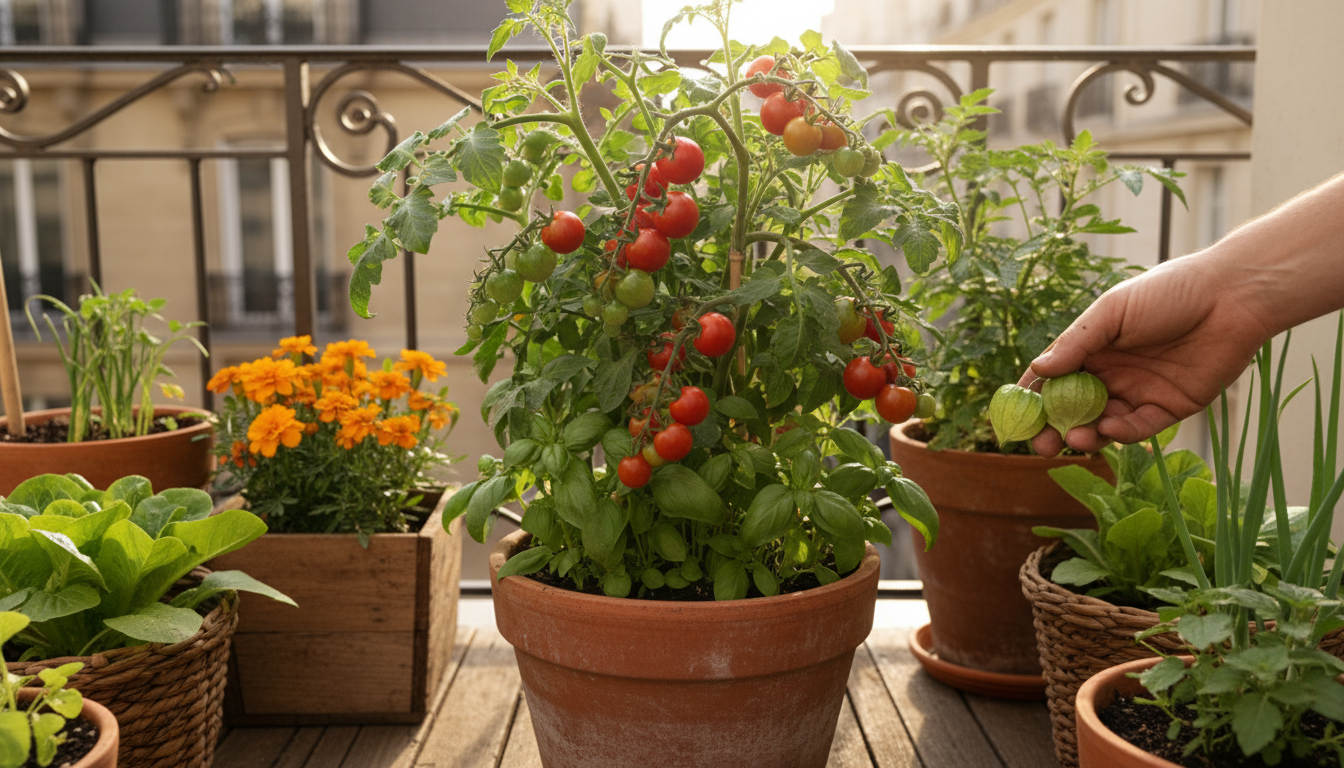
Integrated Pest Management (IPM) through Companions
A reduced pest load means less damage to your plants and more energy directed towards producing fruits and vegetables.
- Repellent Plants: Use strong-scented companions like marigolds, rosemary, or mint (in its own pot) to deter common pests. Fewer pests mean your plants can put all their energy into producing, rather than recovering from damage.
- Trap Cropping: Plant nasturtiums near your squash or beans. They will attract aphids away from your main crops, sacrificing themselves to save your harvest. Monitor the trap crop and manage the pests there as needed, often by simply removing infested plants.
By implementing these companion planting strategies, you transform your small garden into an incredibly efficient and productive food factory, enjoying maximum yields from every square inch you cultivate.
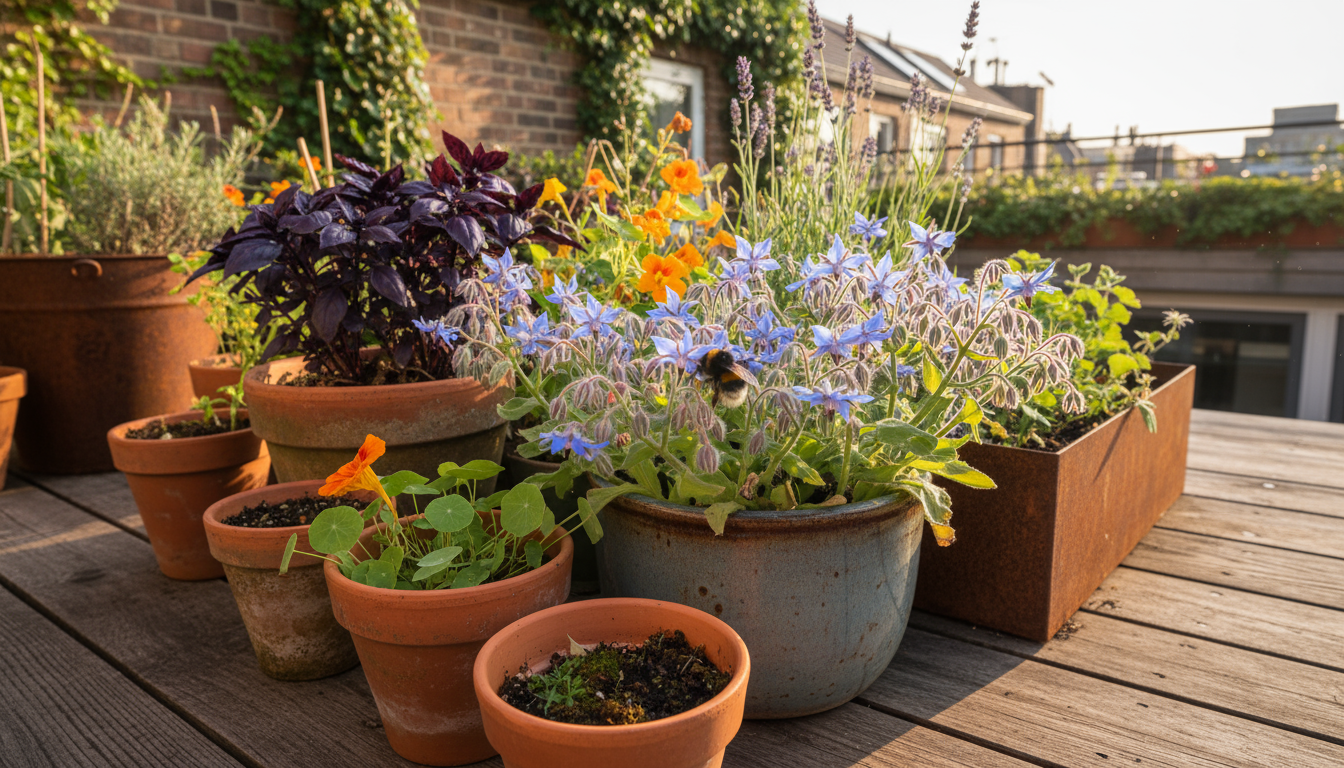
Common Companion Planting Myths and Mistakes to Avoid
While companion planting offers fantastic benefits for your small garden, it also comes with its share of misconceptions and potential pitfalls. Avoiding these common mistakes ensures your efforts are productive and do not inadvertently hinder your plants.
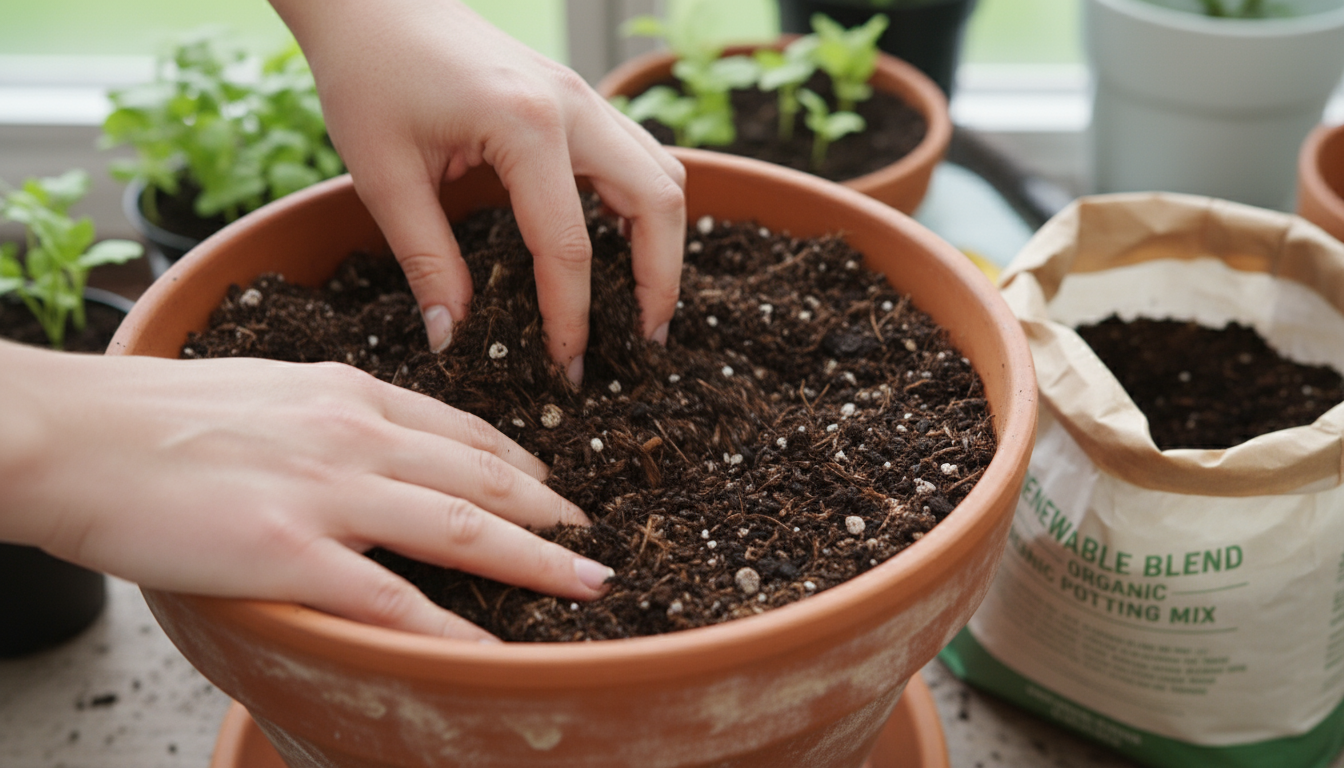
Mistake 1: Relying Solely on Companion Planting for Pest Control
Myth: Companion planting eliminates all pests.
Reality: Companion planting is a powerful tool in an integrated pest management (IPM) strategy, but it is not a magic bullet. While certain plants deter specific pests or attract beneficial insects, a severe infestation may still require additional intervention. You still need to monitor your plants regularly. If you spot a problem, consider physical removal (hand-picking caterpillars), water sprays (for aphids), or least-toxic organic solutions as needed. Companion planting reduces the likelihood and severity of outbreaks, but it does not guarantee a completely pest-free garden.
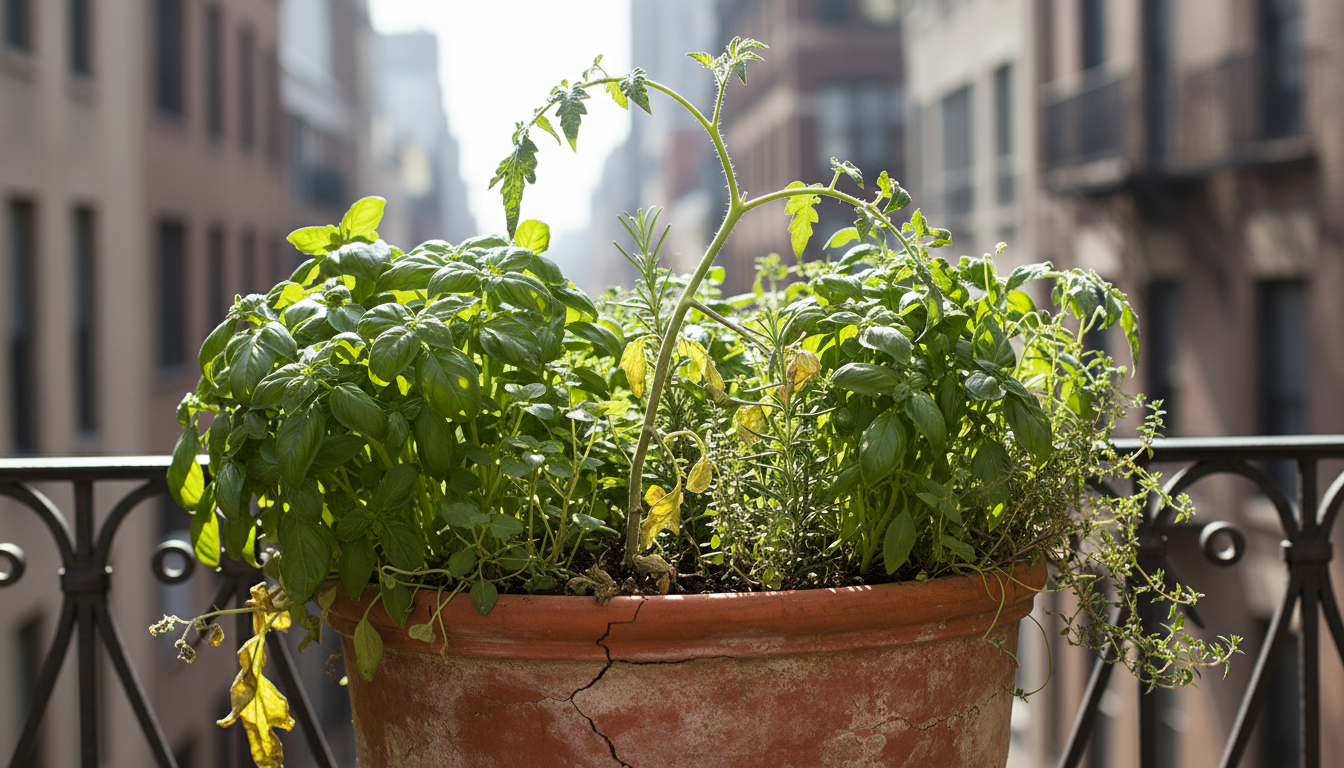
Mistake 2: Ignoring Plant Families and Their Interactions
Myth: All plants are good companions for at least something.
Reality: Plants within the same family often share common pests and diseases. For instance, while basil is great with tomatoes, growing different members of the brassica family (cabbage, broccoli, kale) too close can sometimes concentrate pests like cabbage worms. Additionally, some plants, like members of the mint family, can be aggressive spreaders. Always research specific plant families and their known interactions, both positive and negative, to avoid unintended consequences in your small garden.
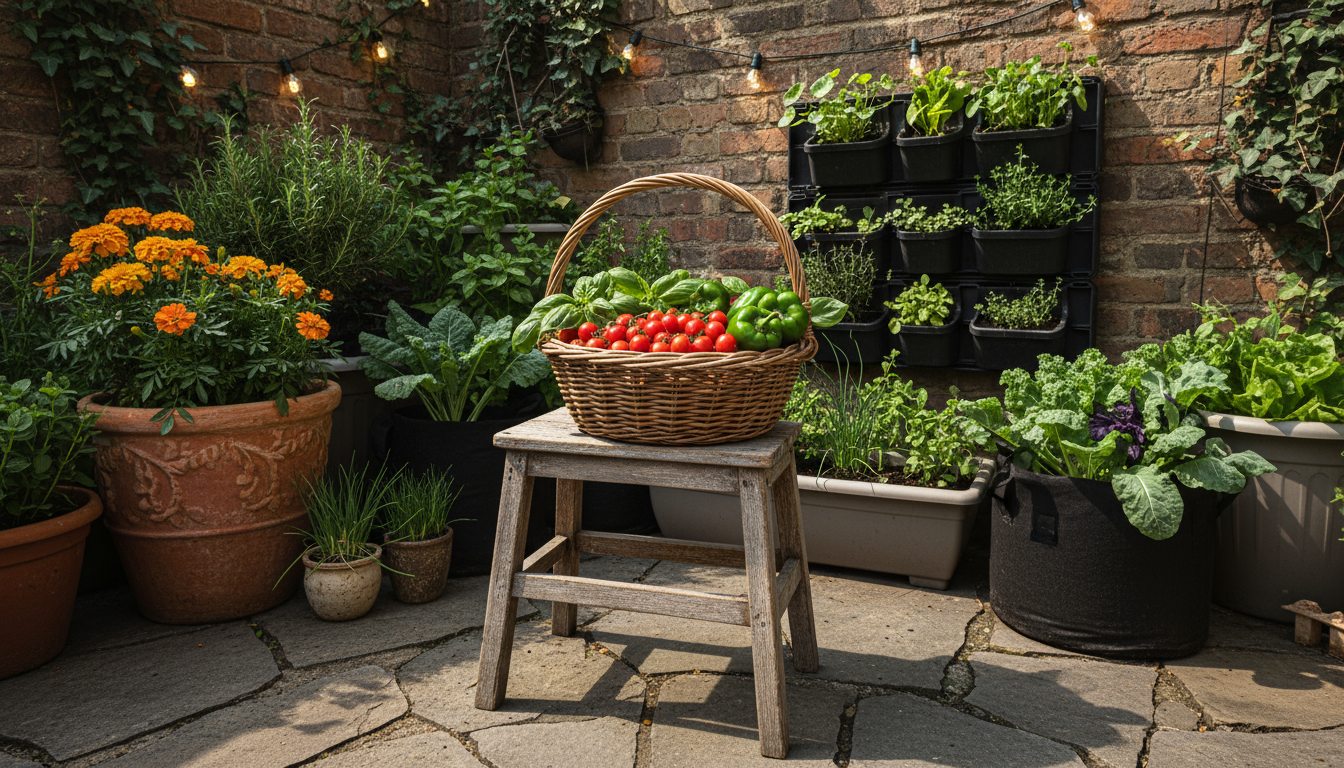
Mistake 3: Overcrowding Containers and Beds
Myth: More plants in a small space equals more yield with companion planting.
Reality: While companion planting encourages efficient space use, it does not mean cramming as many plants as possible into a container. Overcrowding leads to competition for light, water, and nutrients, weakening plants and making them more susceptible to pests and diseases. Ensure each plant, even companions, has adequate room to grow. For example, a tomato needs significant space; planting one basil plant is beneficial, but planting three might be too much. Refer to recommended plant spacing, even when companion planting, and choose compact varieties for small gardens.
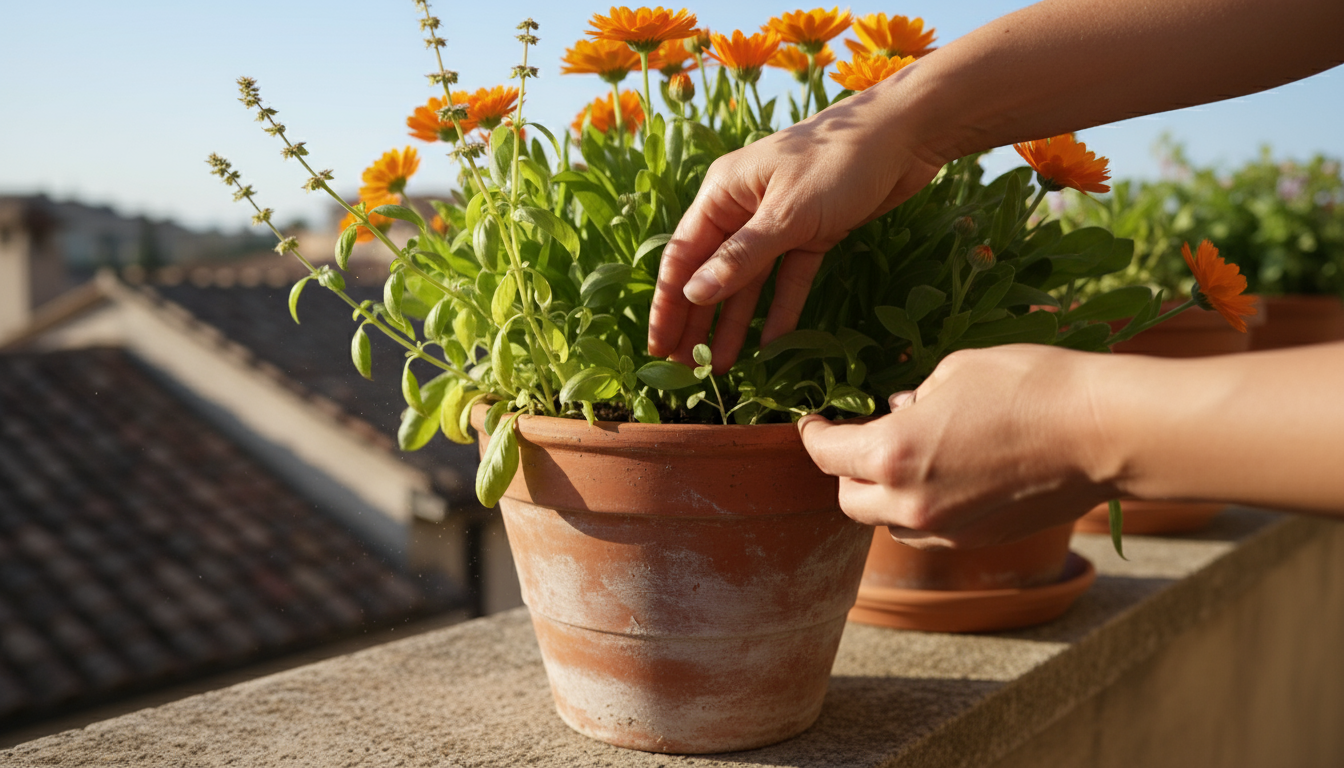
Mistake 4: Believing All “Traditional” Pairings Are Universally Effective
Myth: Every traditional companion planting guide is scientifically proven and works everywhere.
Reality: Many companion planting recommendations are based on anecdotal evidence passed down through generations. While many are effective, some lack scientific backing or may not perform as expected in every microclimate or soil condition. Experiment in your own garden. What works for one gardener in a different region may not be ideal for your specific container setup or local pest pressure. Observe your plants and adjust your strategies based on what you see working.
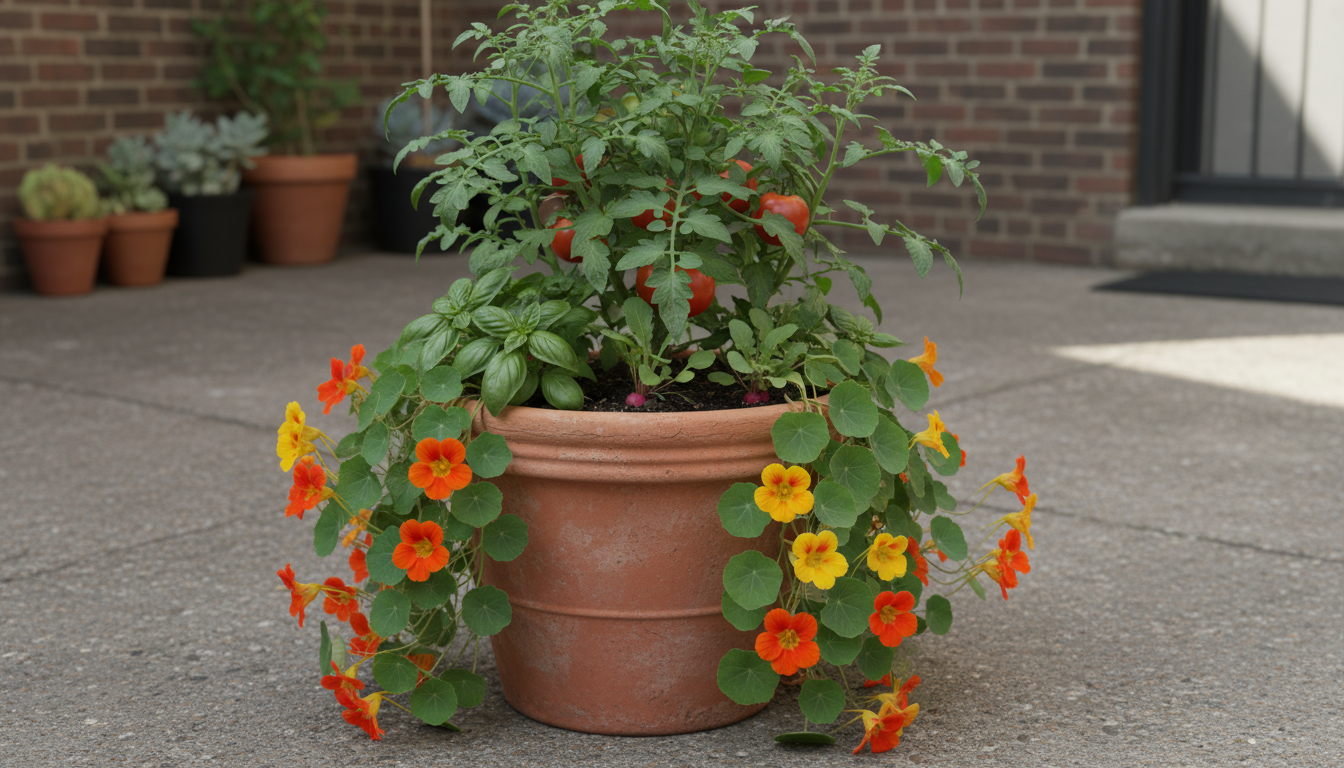
Mistake 5: Neglecting Soil Health and Water Needs
Myth: Companion planting eliminates the need for good soil and proper watering.
Reality: Companion planting complements good basic gardening practices; it does not replace them. Healthy soil, rich in organic matter, and consistent, appropriate watering remain fundamental to plant success. Ensure your containers have well-draining, nutrient-rich potting mix (preferably peat-free). Group plants with similar water requirements to simplify irrigation. Even the best companion pair will struggle in poor soil or with inconsistent watering.
By understanding and avoiding these common mistakes, you can harness the true power of companion planting, ensuring a thriving and productive small garden.
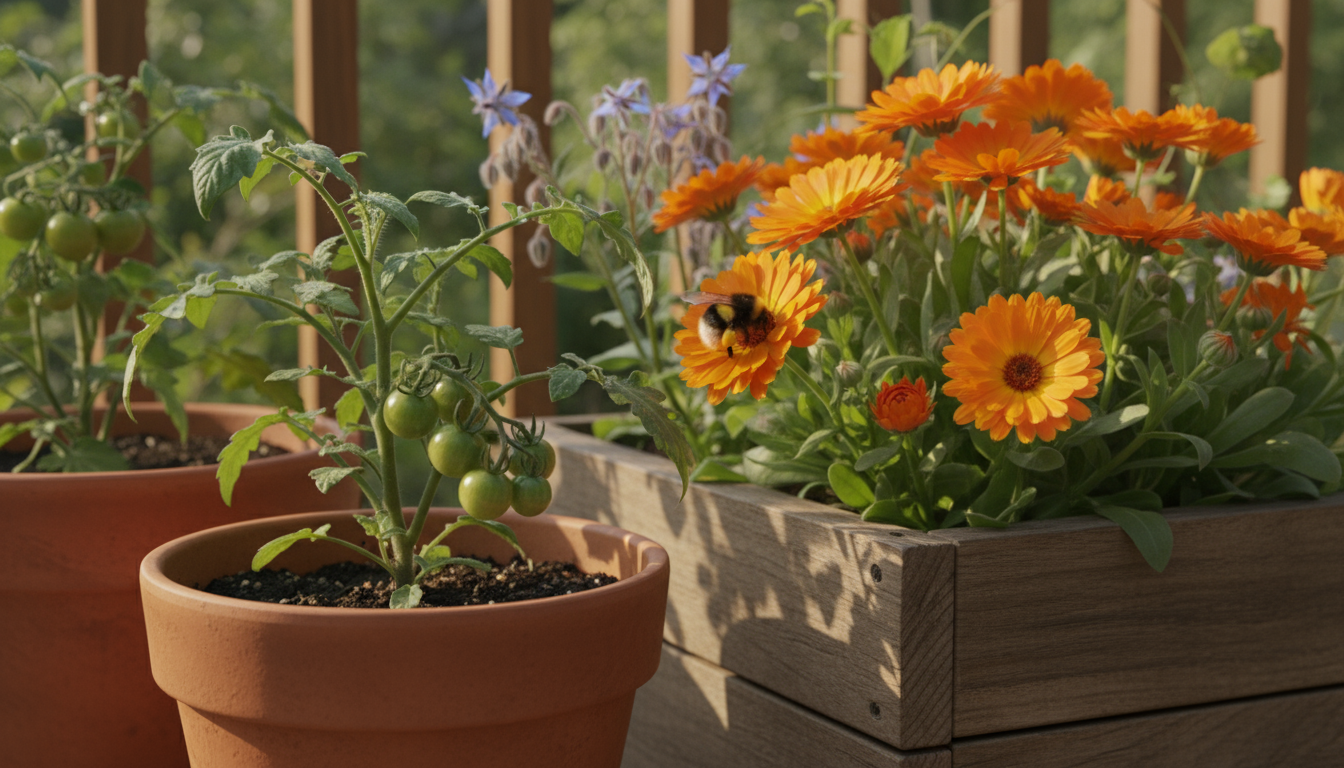
Sustainable Practices and Your Companion Garden
Embracing companion planting naturally aligns with sustainable gardening principles, which are particularly important in small spaces. You can create a low-impact, environmentally friendly garden by focusing on resource efficiency and ecological balance. Your companion garden contributes to a healthier planet by reducing waste, conserving resources, and fostering biodiversity.
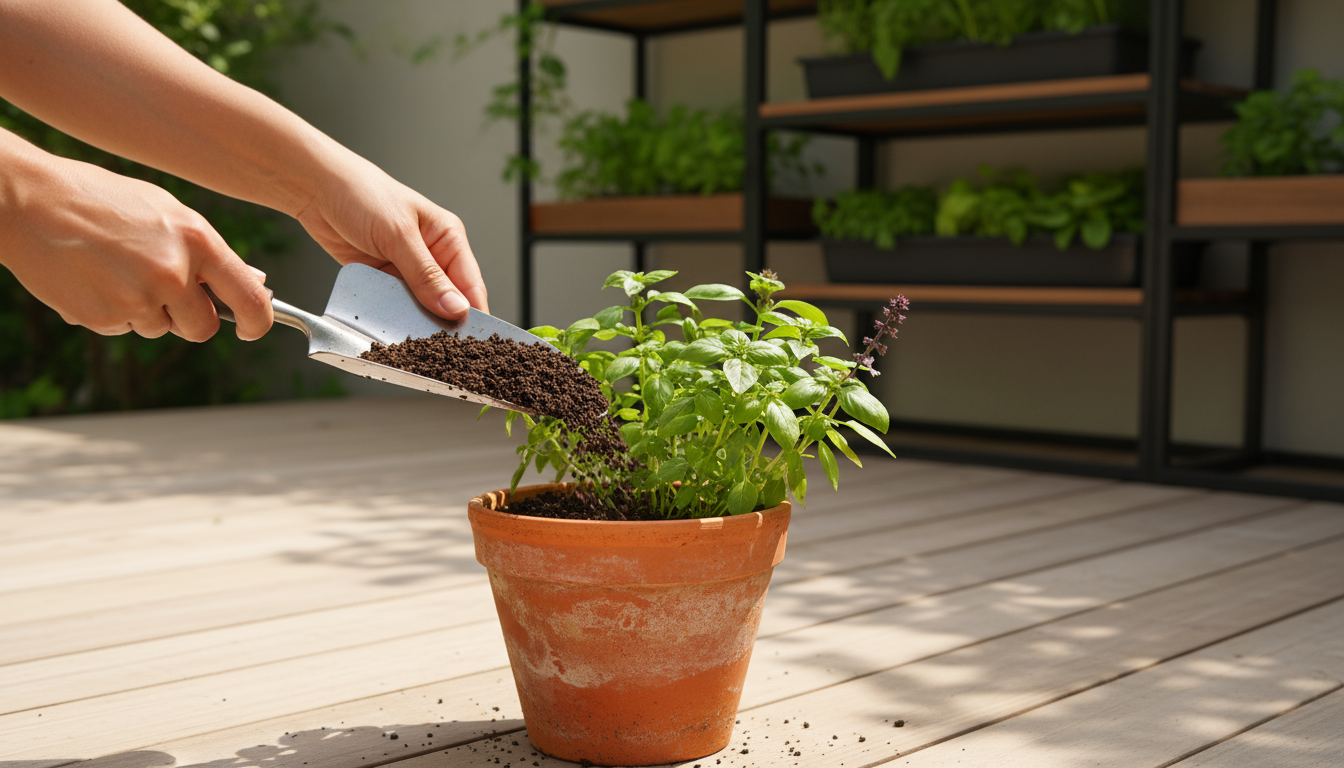
Optimizing Soil Health Sustainably
- Peat-Free Potting Mixes: Choose potting mixes that do not contain peat. Peat harvesting damages vital wetland ecosystems. Look for mixes made with coir, compost, or rice hulls. Healthy soil is the foundation for strong plants, making them more resistant to pests and diseases, a core tenet of companion planting.
- Composting and Vermicomposting: Create your own nutrient-rich compost from kitchen scraps and garden waste. For small spaces, a worm bin (vermicompost) is an excellent way to turn food waste into highly fertile worm castings, which you can use to enrich your container soil. This reduces waste and provides free, organic fertilizer.
- Mulching with Living Companions: As discussed, low-growing companion plants act as a living mulch, conserving soil moisture, suppressing weeds, and keeping soil temperatures stable. This reduces your need for external mulching materials and watering.
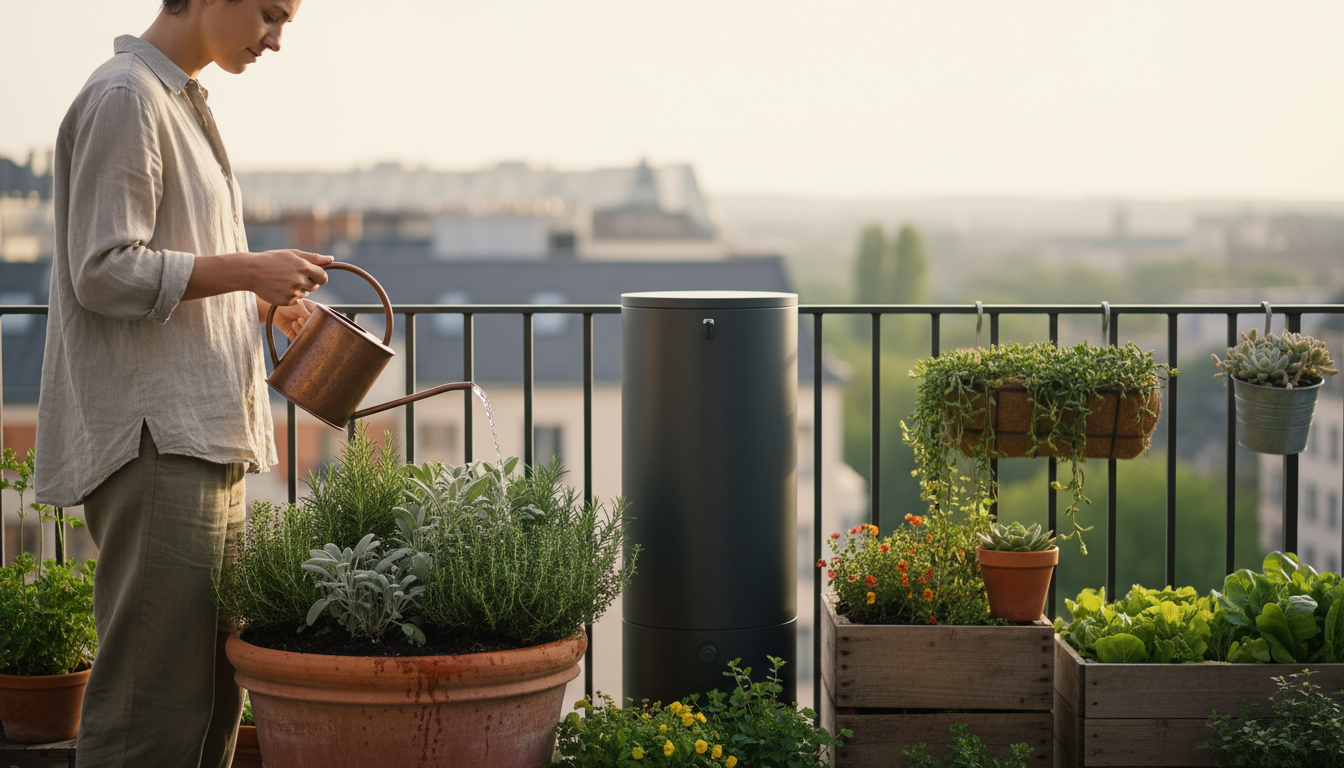
Efficient Water Management
- Deep, Infrequent Watering: Encourage deep root growth by watering thoroughly but less frequently. This makes plants more resilient to dry spells, which is crucial in containers that can dry out quickly.
- Grouping by Water Needs: Plant companions with similar water requirements together. This prevents overwatering drought-tolerant plants or underwatering moisture-loving ones, optimizing water use and reducing waste.
- Rainwater Harvesting: If feasible, collect rainwater in a small barrel or container. Rainwater is free of chlorine and beneficial for your plants.
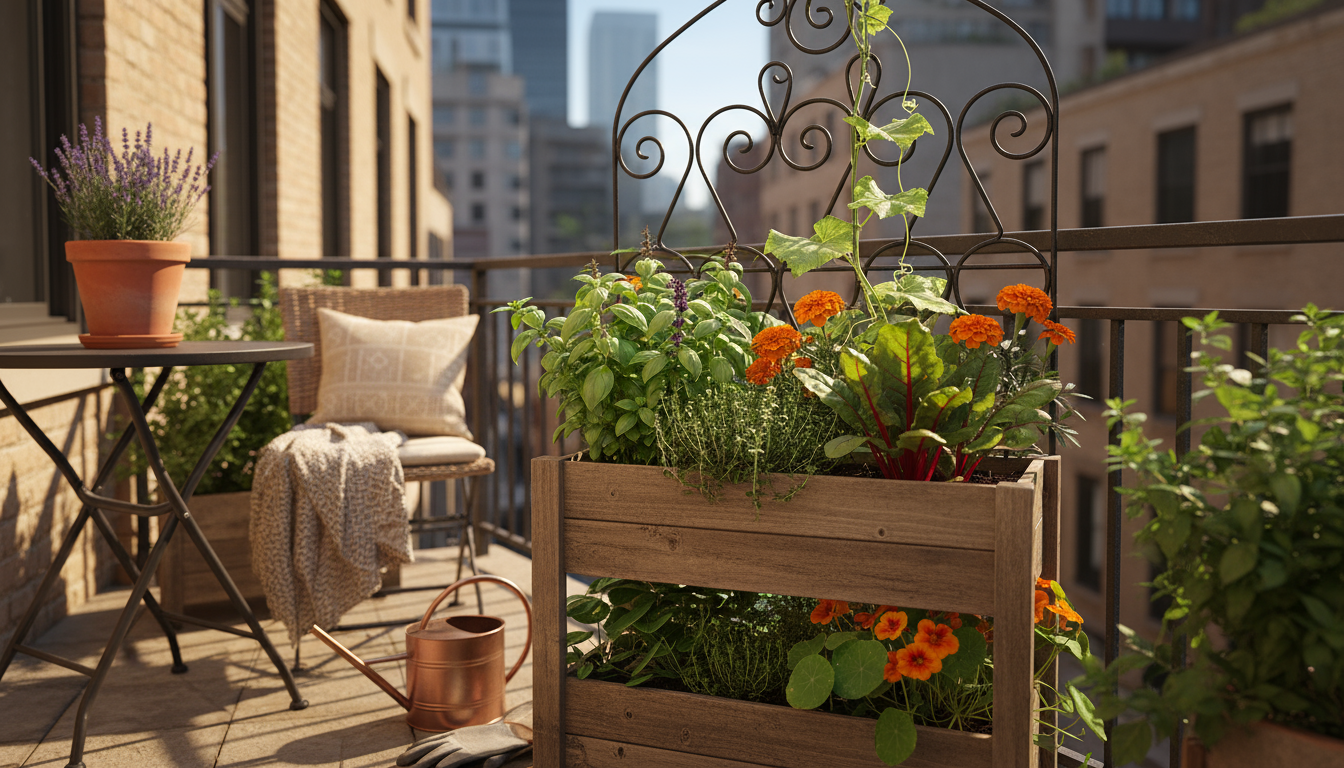
Supporting Biodiversity and Pollinators
- Plant for Pollinators: Intentionally include flowering companions like calendula, borage, cosmos, and dill (let some go to seed). These provide nectar and pollen for bees, butterflies, and other vital pollinators. Pollinators ensure your fruiting plants produce abundant harvests.
- Create Habitats for Beneficial Insects: A diverse companion garden with different plant heights and structures offers shelter for beneficial predators like ladybugs, lacewings, and predatory wasps. These insects naturally control pests, reducing your need for sprays.
- Avoid Chemical Pesticides and Herbicides: Companion planting is a natural form of pest control. Avoiding synthetic chemicals protects pollinators, beneficial insects, and the overall ecosystem of your garden. Embrace organic pest control methods when necessary.
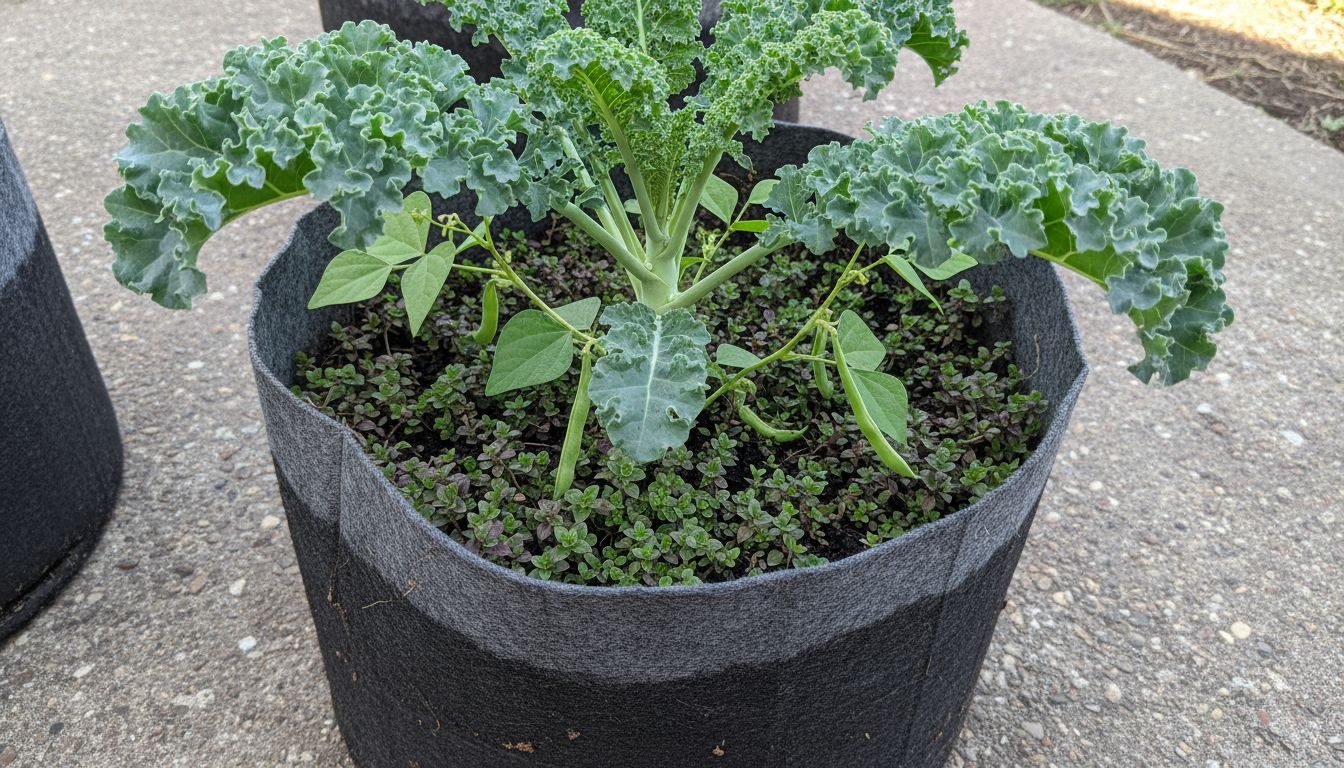
Seed Saving and Heirloom Varieties
- Choose Open-Pollinated Seeds: Opt for open-pollinated or heirloom varieties. These allow you to save seeds from your healthiest plants at the end of the season, maintaining genetic diversity and providing free seeds for future seasons. It is a true act of gardening self-reliance.
- Support Local Seed Companies: Purchasing seeds from local, organic, or small-scale seed companies helps support sustainable agriculture and regional biodiversity.
By weaving these sustainable practices into your companion planting strategy, you create a garden that is not only productive and beautiful but also environmentally responsible. You contribute to a healthier ecosystem, one small garden space at a time.
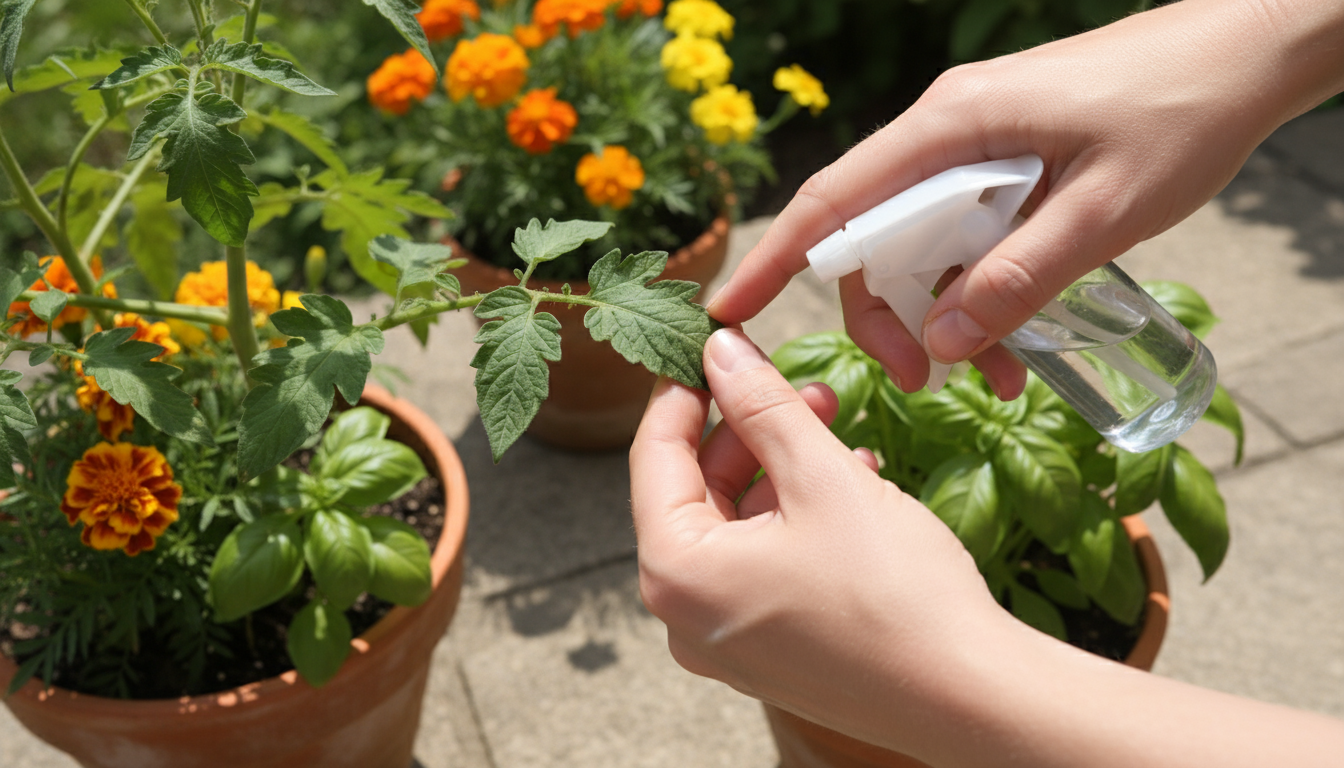
Frequently Asked Questions
Q: Can I use companion planting in every single container in my small garden?
A: Yes, you absolutely can and should integrate companion planting into every container or raised bed in your small garden. The principles apply universally, even if it is just a single basil plant next to a tomato in one pot. Each pairing helps create a micro-ecosystem, maximizing benefits for your plants. You might use a marigold to deter nematodes in one pot and borage to attract pollinators to another.
Q: What if I do not have space for all the recommended companion flowers and herbs?
A: Focus on versatility. Choose multi-functional plants. For example, nasturtiums are edible, beautiful, and act as a trap crop for aphids. Basil improves tomato flavor and deters pests. Prioritize those plants that offer the most benefits for your specific edible crops and fit your aesthetic. Even one or two well-chosen companion plants can make a significant difference. Consider growing herbs in smaller pots that you can move around to different areas as needed.
Q: How do I know if a companion pairing is actually working?
A: Observation is key. Monitor your plants for signs of improved health, fewer pests, and better growth compared to previous seasons or similar plants grown without companions. Look for an increase in beneficial insects like ladybugs or hoverflies. Notice if certain pests are less prevalent on your main crops when specific companions are nearby. Companion planting is an ongoing experiment, so keep notes and adjust as you learn what works best in your unique garden environment.
Q: Can I overdo companion planting, making my small garden too crowded?
A: Yes, you can overdo it. The goal is strategic planting, not simply stuffing more plants into a small space. Overcrowding leads to competition for nutrients, water, and sunlight, and can reduce air circulation, increasing disease risk. Always ensure adequate spacing for each plant to reach its mature size, even when companion planting. Use companions that complement, not compete with, your main crops for resources. Opt for compact varieties of both edibles and companions where space is extremely limited.
Q: Are there any universal “bad” companion pairings I should always avoid?
A: Yes, some plants do not get along. Avoid planting members of the brassica family (cabbage, broccoli, kale) near strawberries, as they can inhibit strawberry growth. Fennel is generally considered a poor companion for most plants, often inhibiting growth due to allelopathic compounds. Also, some plants like mint are so vigorous they can outcompete and overwhelm neighbors if not contained in their own pots. Always research specific plant interactions if you are unsure about a pairing.
